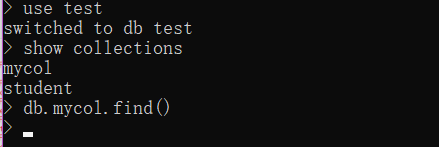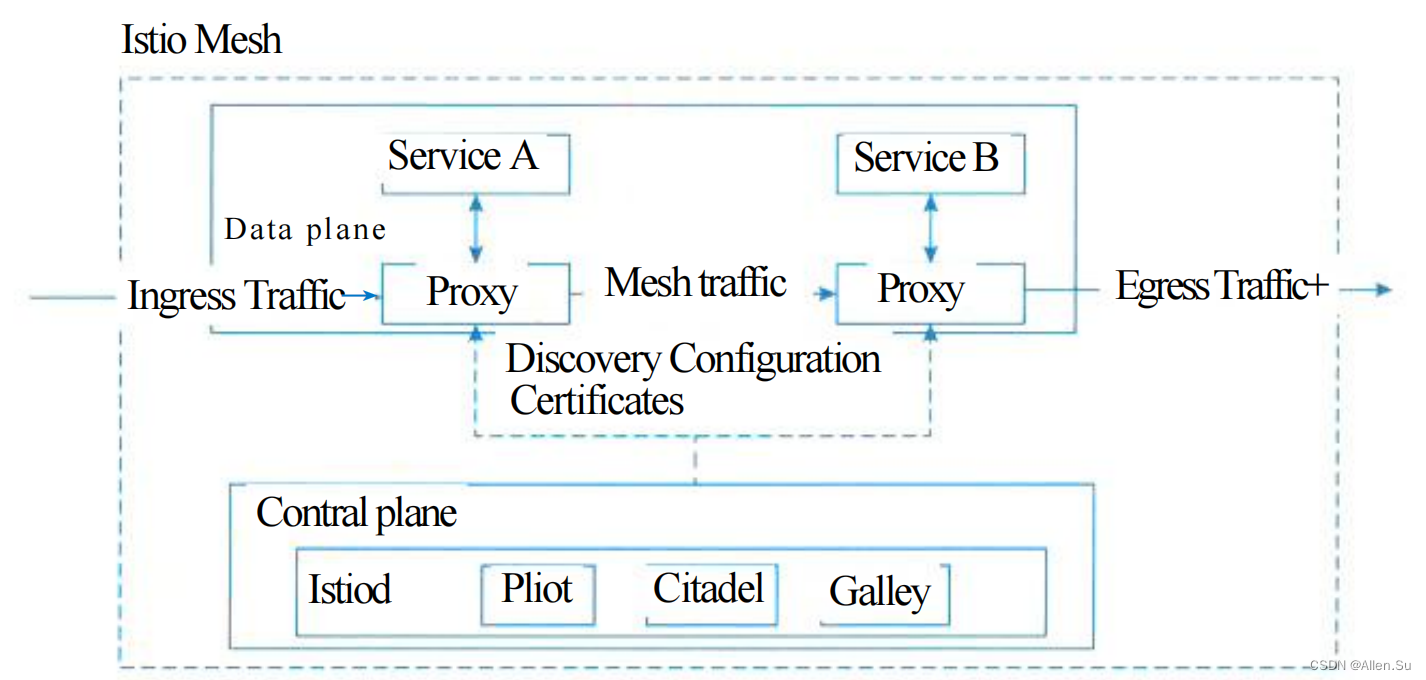温故知新
- 📚第三章 Kubernetes各组件部署
- 📗安装kubectl(可直接跳转到安装kubeadm章节,直接全部安装了)
- 📕下载kubectl安装包
- 📕执行kubectl安装
- 📕验证kubectl
- 📗安装kubeadm
- 📕添加yum存储库配置文件kubernetes.repo
- 📕安装kubeadm & kubelet & kubectl (前面安装kubectl 可以放到这里一块安装)
- 📕查看版本信息
- 📕启动kubelet
- 📘kubelet启动、查看状态、日志命令
- 📗其他机器Kubernetes组件安装
- 📕关闭防火墙、swap、selinux
- 📕创建sudo安装用户kubernetes
- 📕添加kubernetes对应的yum存储库配置文件
- 📕安装kubeadm & kubelet & kubectl
- 📕安装命令验证
- 📚第四章 kubernetes集群部署
- 📗安装docker(r1、r2、r3都要安装)
- 📕yum 方式安装
- 📗安装cri-dockerd(r1、r2、r3都要安装)
- 📕下载rpm安装包
- 📕通过rpm安装
- 📕启动cri-dockerd
- 📗初始化K8S集群
- 📕配置/etc/hosts(r1、r2、r3三台机器)
- 📕配置初始化系统参数
- 📘module参数
- 📘sysctl 参数
- 📕Master节点初始化(对应r1机器)
- 📘kubeadm init
- 📘admin.conf
- 📕安装网络插件(r1、r2、r3机器)
- 📕Node节点假如到Master(对应r2、r3机器)
- 📚总结
- ⁉️问题记录
- ❓问题一:yum安装软件提示“网络不可达”
- ❗解决方式一:重启虚拟机网络`sudo systemctl restart network`
- ❕其他:替换镜像地址为阿里云的命令
- ❓问题二:容器运行时名词解释
- ❓问题三:获取阿里云镜像加速器地址步骤
- ❓问题四:kubeadm init执行失败
- ❓错误详情一:`detected that the sandbox image "registry.k8s.io/pause:3.6" of the container runtime is inconsistent with that used by kubeadm. It is recommended that using "registry.aliyuncs.com/google_containers/pause:3.9" as the CRI sandbox image`
- ❓错误详情二:`[kubelet-check] Initial timeout of 40s passed.`
- ❗最终解决:修改`vi /usr/lib/systemd/system/cri-docker.service`
- ❓问题五:kubeadm join执行失败
- ❓错误详情一:`[WARNING Hostname]: hostname "renxiaozhao03"could not be reached`
- ❗解决方式添加`--node-name`参数,指定主机名
- ❓错误详情二:超时报错`error execution phase kubelet-start: error uploading crisocket: nodes "k8s-node01" not found`
- ❗解决方式使用`kubeadm reset`重置之后再添加`join`
- 🦒弯路历程
🔼上一集:K8S最新版本集群部署(v1.28) + 容器引擎Docker部署(上)
*️⃣主目录:温故知新专栏
🔽下一集:Kubernetes可视化管理工具Kuboard部署使用及k8s常用命令梳理记录
📚第三章 Kubernetes各组件部署
📗安装kubectl(可直接跳转到安装kubeadm章节,直接全部安装了)
kubectl 是使用 Kubernetes API 与 Kubernetes 集群的控制面进行通信的命令行工具。详见官网安装步骤
📕下载kubectl安装包
kubectl v1.28.1下载

📕执行kubectl安装
[kubernetes@renxiaozhao01 ~]$ sudo install -o root -g root -m 0755 kubectl /usr/local/bin/kubectl
[kubernetes@renxiaozhao01 ~]$
[kubernetes@renxiaozhao01 ~]$ kubectl version --client
Client Version: v1.28.1
Kustomize Version: v5.0.4-0.20230601165947-6ce0bf390ce3
[kubernetes@renxiaozhao01 ~]$
[kubernetes@renxiaozhao01 ~]$ 就这么简单,之前傻傻的通过curl下载,估计哪里卡住了,一个半小时都没下载好,网络环境好的话当然还是直接curl -LO https://dl.k8s.io/release/v1.28.1/bin/linux/amd64/kubectl方便

📕验证kubectl
执行kubectl version --client或者kubectl version --client --output=yaml
[kubernetes@renxiaozhao01 ~]$ kubectl version --client --output=yaml
clientVersion:buildDate: "2023-08-24T11:23:10Z"compiler: gcgitCommit: 8dc49c4b984b897d423aab4971090e1879eb4f23gitTreeState: cleangitVersion: v1.28.1goVersion: go1.20.7major: "1"minor: "28"platform: linux/amd64
kustomizeVersion: v5.0.4-0.20230601165947-6ce0bf390ce3[kubernetes@renxiaozhao01 ~]$
[kubernetes@renxiaozhao01 ~]$ kubectl version --client
Client Version: v1.28.1
Kustomize Version: v5.0.4-0.20230601165947-6ce0bf390ce3
[kubernetes@renxiaozhao01 ~]$
[kubernetes@renxiaozhao01 ~]$
📗安装kubeadm
官网详情
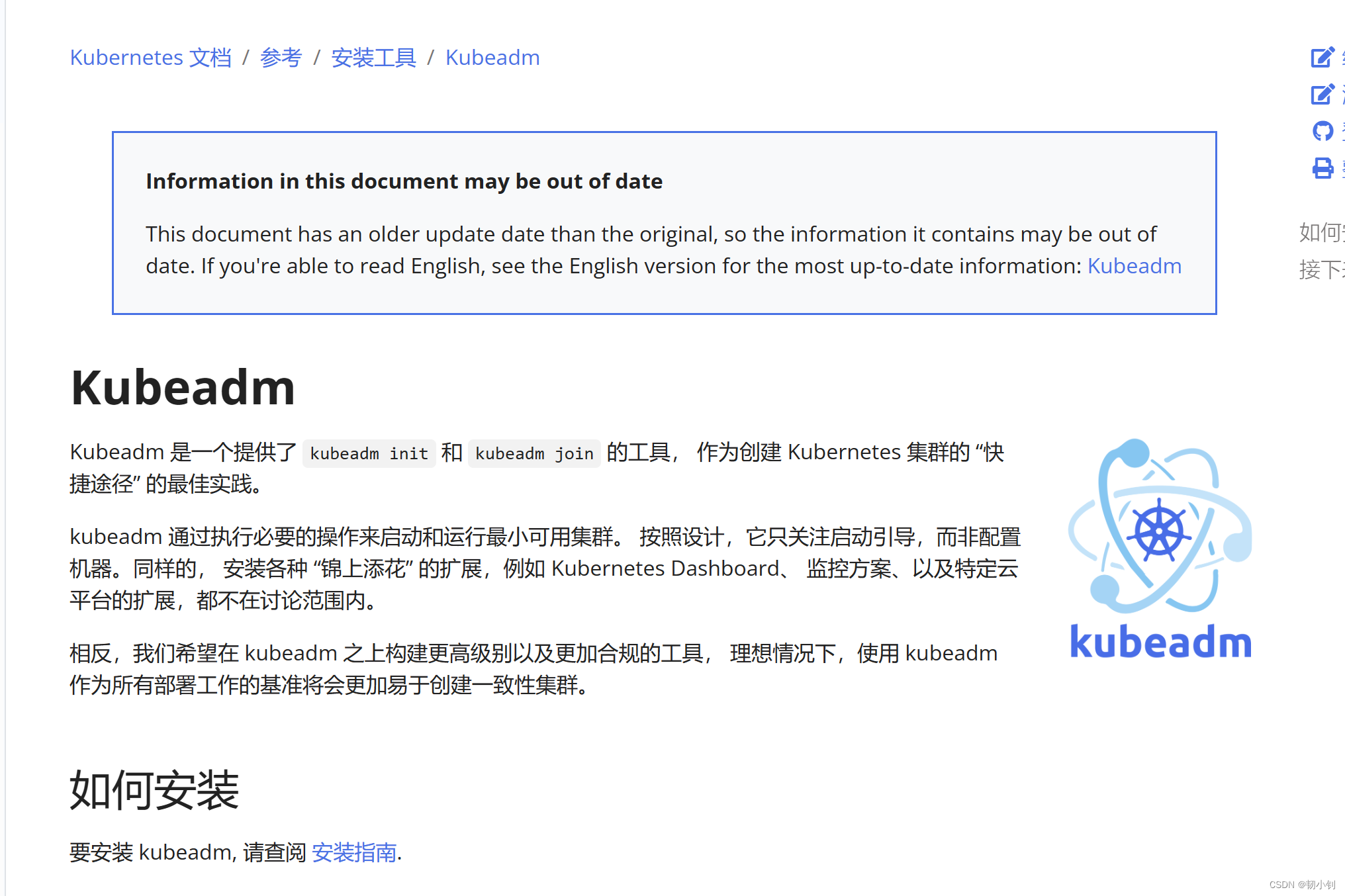

📕添加yum存储库配置文件kubernetes.repo
cat <<EOF | sudo tee /etc/yum.repos.d/kubernetes.repo
[kubernetes]
name=Kubernetes
baseurl=http://mirrors.aliyun.com/kubernetes/yum/repos/kubernetes-el7-x86_64
enabled=1
gpgcheck=0
repo_gpgcheck=1
gpgkey=http://mirrors.aliyun.com/kubernetes/yum/doc/yum-key.gpghttp://mirrors.aliyun.com/kubernetes/yum/doc/rpm-package-key.gpg
exclude=kubelet kubeadm kubectl
EOF

📕安装kubeadm & kubelet & kubectl (前面安装kubectl 可以放到这里一块安装)
安装命令:sudo yum install -y kubelet kubeadm kubectl --disableexcludes=kubernetes
这里不会重复安装,对于之前已经安装过的kubectl,yum安装时会自动跳过


📕查看版本信息
[kubernetes@renxiaozhao01 ~]$ kubelet --version
Kubernetes v1.28.1
[kubernetes@renxiaozhao01 ~]$ kubeadm version
kubeadm version: &version.Info{Major:"1", Minor:"28", GitVersion:"v1.28.1", GitCommit:"8dc49c4b984b897d423aab4971090e1879eb4f23", GitTreeState:"clean", BuildDate:"2023-08-24T11:21:51Z", GoVersion:"go1.20.7", Compiler:"gc", Platform:"linux/amd64"}
[kubernetes@renxiaozhao01 ~]$
[kubernetes@renxiaozhao01 ~]$ 
📕启动kubelet
执行sudo systemctl enable --now kubelet命令:
kubelet运行在每个节点上,并负责管理和监控节点上的容器。它与Kubernetes Master节点通信,接收来自Master节点的指令,并根据指令来创建、销毁和管理容器。enable将kubelet服务设置为开机启动。而通过添加--now选项,kubelet服务将立即启动
📘kubelet启动、查看状态、日志命令
-
查看状态:
systemctl status kubelet

kubelet 现在每隔几秒就会重启,因为它陷入了一个等待 kubeadm 指令的死循环。
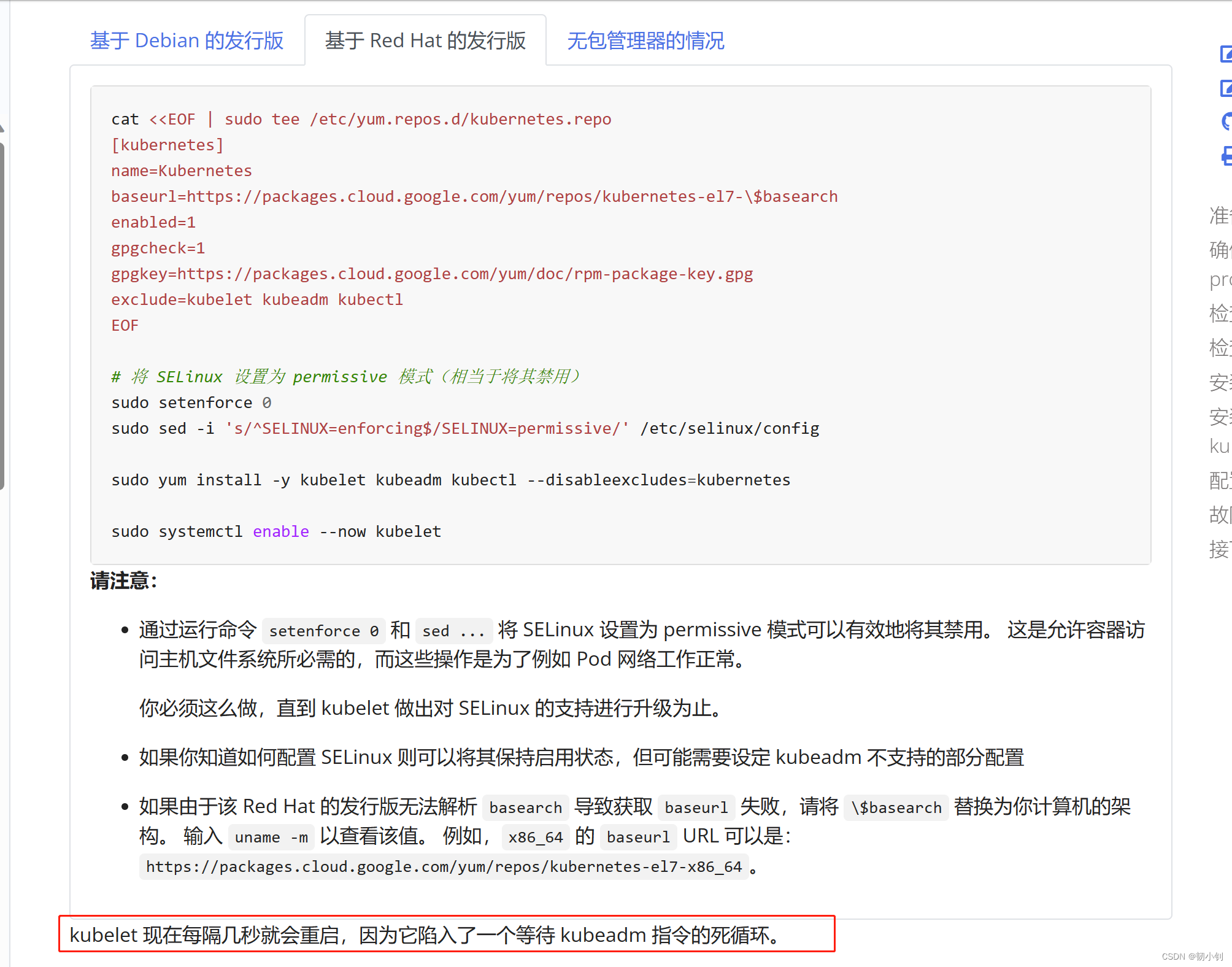
在使用kubeadm初始化Kubernetes集群时,需要在Master节点上运行一些kubeadm命令来完成初始化过程。其中一个命令是kubeadm init,它将生成一个用于加入其他节点的令牌。kubelet服务在启动时会检查是否存在这个令牌,如果没有找到,它会陷入一个等待kubeadm指令的死循环。 -
手动启动:
systemctl start kubelet -
查看日志:
sudo journalctl -u kubelet
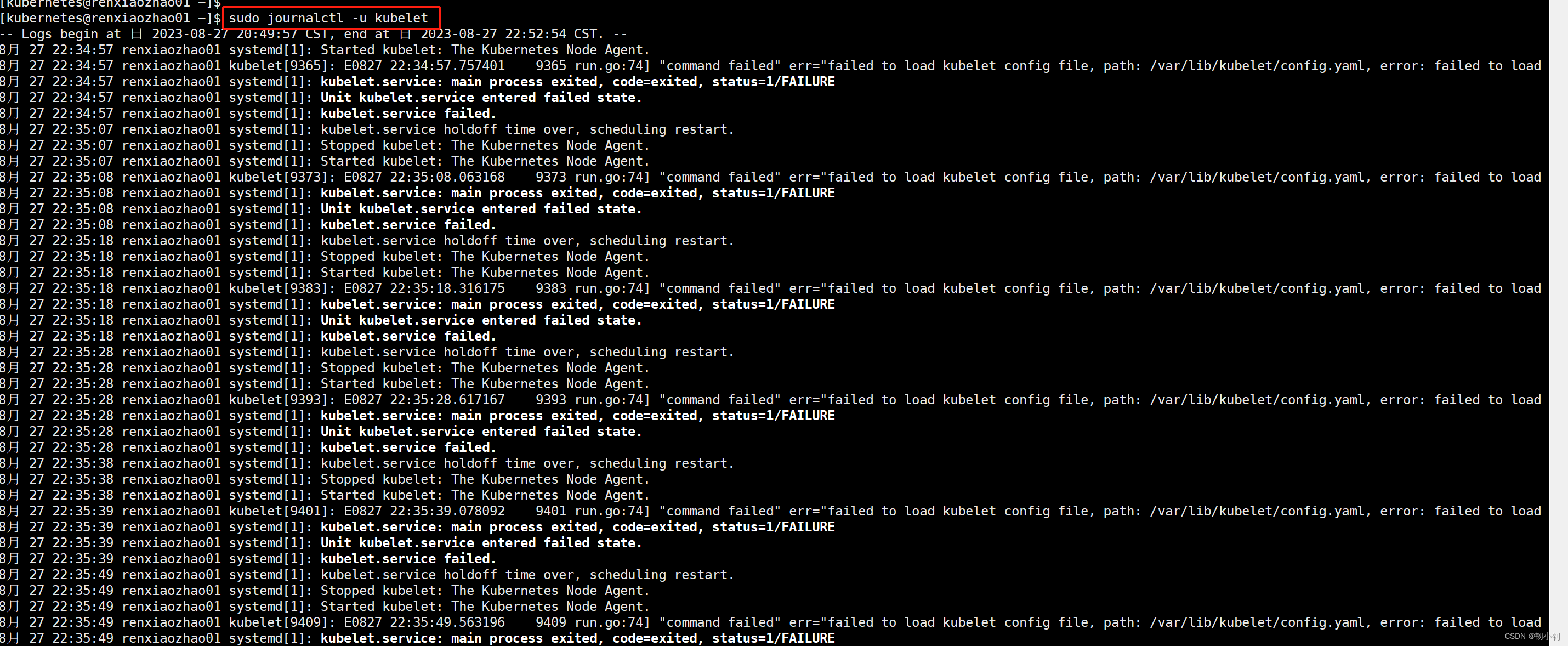
📗其他机器Kubernetes组件安装
到这里已经在r1机器安装完了Kubernetes核心组件,参照上集,主要就是关闭防火墙那些操作,和本集安装kubeadm操作(覆盖了kubeadm、kubelet、kubectl三个核心组件),此处做个精简版概括,继续在r2、r3机器安装(机器信息在上集第二章有介绍)。

📕关闭防火墙、swap、selinux
- 📘关闭防火墙
systemctl stop firewalld.service systemctl status firewalld.service systemctl disable firewalld.service - 📘关闭swap
修改vi /etc/fstab,注释掉/dev/mapper/centos-swap swap...这一行

- 📘关闭selinux
修改vi /etc/sysconfig/selinux,SELINUX=enforcing改为SELINUX=disabled

- 📘重启虚拟机生效
执行reboot或者shutdown -r now
📕创建sudo安装用户kubernetes
useradd kubernetes -d /home/kubernetes
passwd kubernetes
echo 'kubernetes ALL=(ALL) NOPASSWD: ALL' >> /etc/sudoers
📕添加kubernetes对应的yum存储库配置文件
cat <<EOF | sudo tee /etc/yum.repos.d/kubernetes.repo
[kubernetes]
name=Kubernetes
baseurl=http://mirrors.aliyun.com/kubernetes/yum/repos/kubernetes-el7-x86_64
enabled=1
gpgcheck=0
repo_gpgcheck=1
gpgkey=http://mirrors.aliyun.com/kubernetes/yum/doc/yum-key.gpghttp://mirrors.aliyun.com/kubernetes/yum/doc/rpm-package-key.gpg
exclude=kubelet kubeadm kubectl
EOF
📕安装kubeadm & kubelet & kubectl
sudo yum install -y kubelet kubeadm kubectl --disableexcludes=kubernetes
📕安装命令验证
kubelet --version
kubeadm version
kubectl version --client


📚第四章 kubernetes集群部署
官网创建集群说明
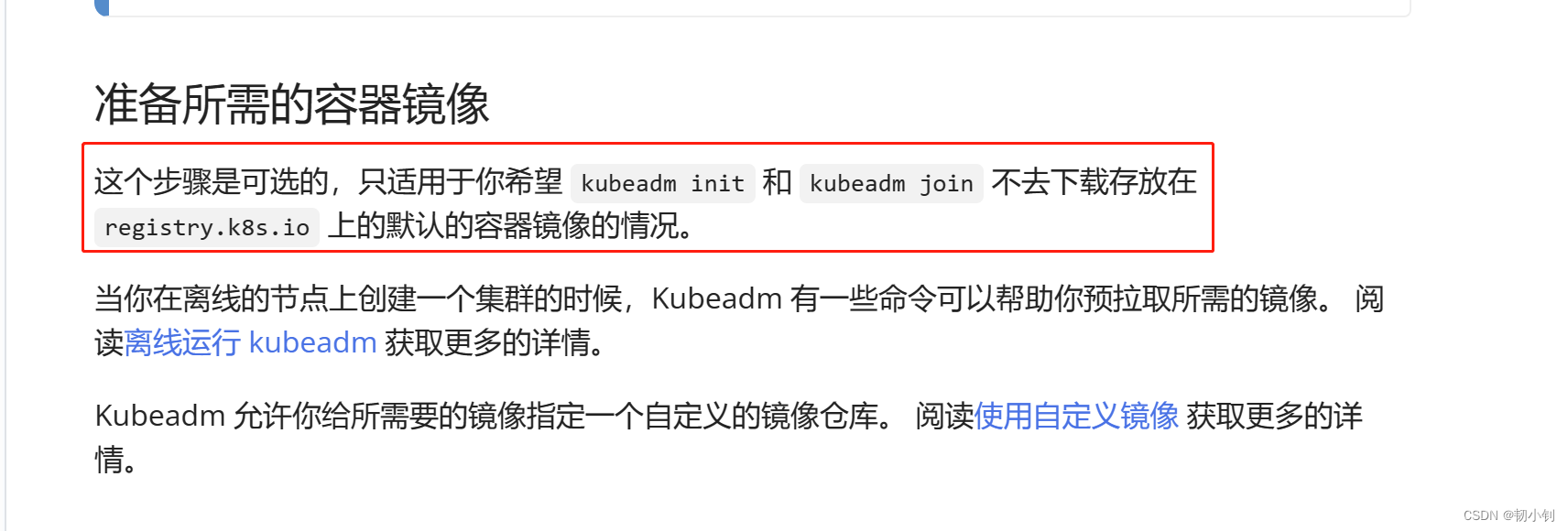
kubeadm init和kubeadm join命令在默认情况下会自动下载所需的Docker镜像。这些镜像包括Kubernetes组件(如kube-apiserver、kube-controller-manager、kube-scheduler等)以及其他一些常用的容器镜像(如CoreDNS等)。- 使用
kubeadm init和kubeadm join命令来初始化和加入集群,并且不需要自定义镜像源,kubeadm init和kubeadm join命令会自动处理Docker的安装和配置。
尝试了一下直接执行kubeadm init,反正都是错,所以还是在r1、r2、r3上面手动安装docker相关组件吧



📗安装docker(r1、r2、r3都要安装)
Kubernetes是一个容器编排平台,用于管理和编排容器化应用程序。它可以与多种容器运行时集成,包括Docker、containerd、CRI-O等。- 安装
Kubernetes时,默认情况下会使用Docker作为容器运行时(这是因为Docker是目前最广泛使用的容器运行时之一,具有广泛的社区支持和成熟的生态系统。因此,大多数Kubernetes安装指南和教程都会建议先安装Docker)。
总结起来,Kubernetes和Docker是相互独立、不是必须绑定在一起的。但是正常在安装Kubernetes时,默认都是先安装Docker容器
📕yum 方式安装
yum 这种方式的安装适用于大多数情况,它会自动获取最新的稳定版本
- 下面的
yum-config-manager是yum-utils中的一个工具sudo yum install -y yum-utils - 设置docker社区版存储库
sudo yum-config-manager --add-repo http://mirrors.aliyun.com/docker-ce/linux/centos/docker-ce.repo - 安装
dockersudo yum install -y docker-ce docker-ce-cli containerd.io docker-buildx-plugin docker-compose-plugin - 启动
dockersudo systemctl start docker - 设置
docker开启启动(虚拟机会经常重启,为了减少麻烦最好设置开机启动)sudo systemctl enable docker - 查看
docker状态sudo systemctl status docker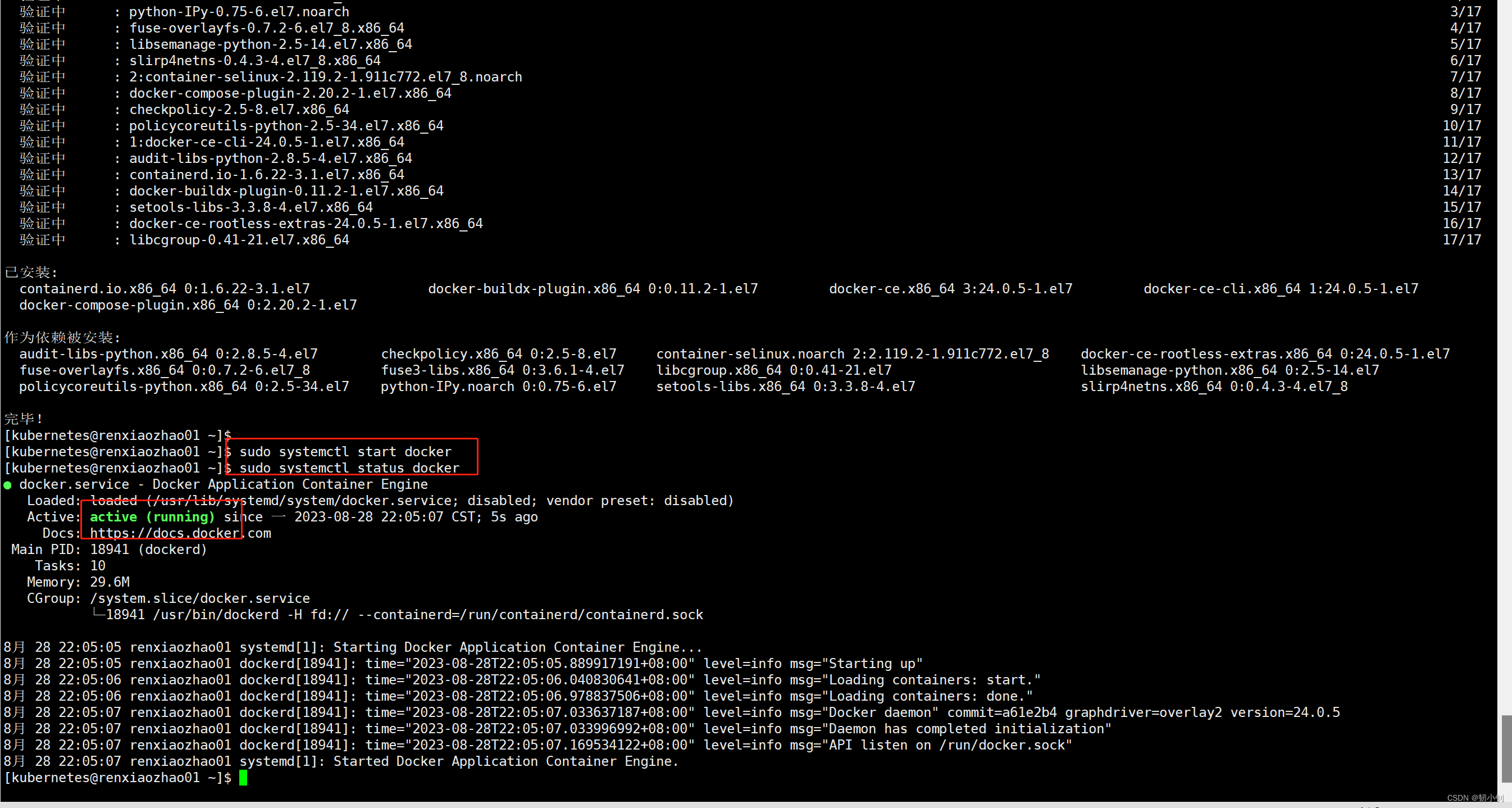
- 查看
docker版本:docker version[kubernetes@renxiaozhao01 ~]$ docker version Client: Docker Engine - CommunityVersion: 24.0.5API version: 1.43Go version: go1.20.6Git commit: ced0996Built: Fri Jul 21 20:39:02 2023OS/Arch: linux/amd64Context: default permission denied while trying to connect to the Docker daemon socket at unix:///var/run/docker.sock: Get "http://%2Fvar%2Frun%2Fdocker.sock/v1.24/version": dial unix /var/run/docker.sock: connect: permission denied [kubernetes@renxiaozhao01 ~]$ - 配置镜像加速器,参照文章下面的问题三,支付宝登录一下阿里云镜像地址就获取到了
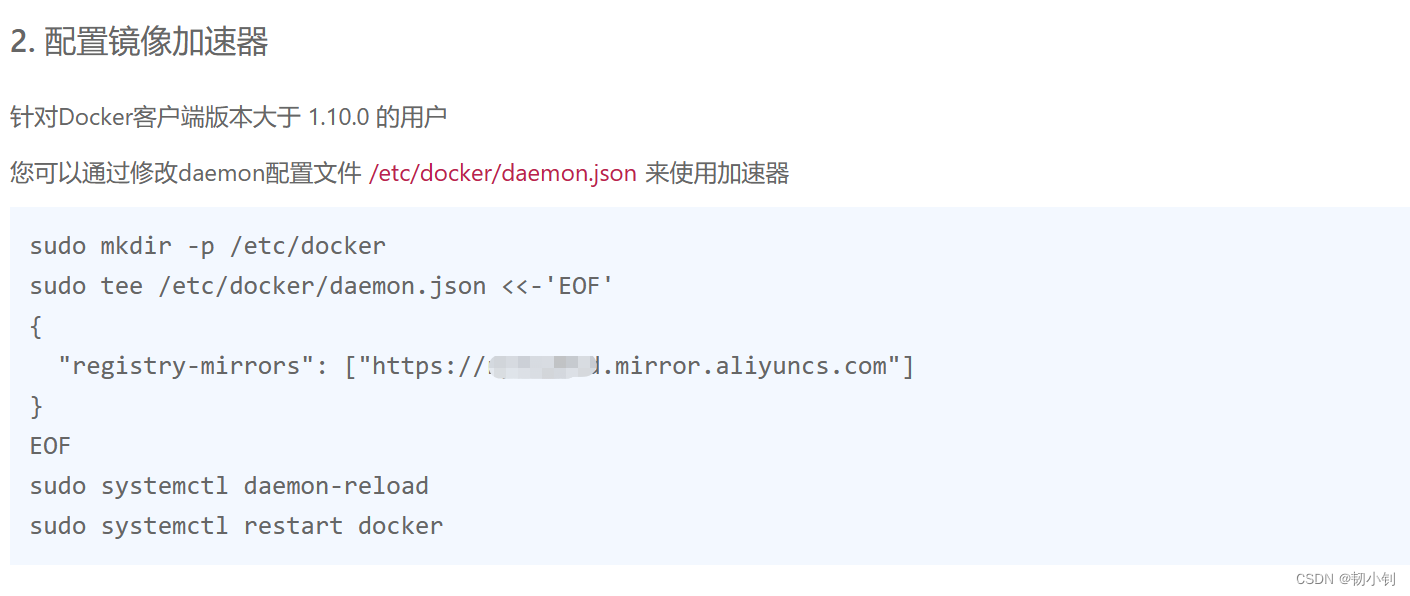
sudo mkdir -p /etc/docker sudo tee /etc/docker/daemon.json <<-'EOF' {"registry-mirrors": ["https://xxxx.mirror.aliyuncs.com"] } EOF sudo systemctl daemon-reload sudo systemctl restart docker - 执行
sudo docker info可以看到刚刚配置的加速器信息

📗安装cri-dockerd(r1、r2、r3都要安装)
官网地址
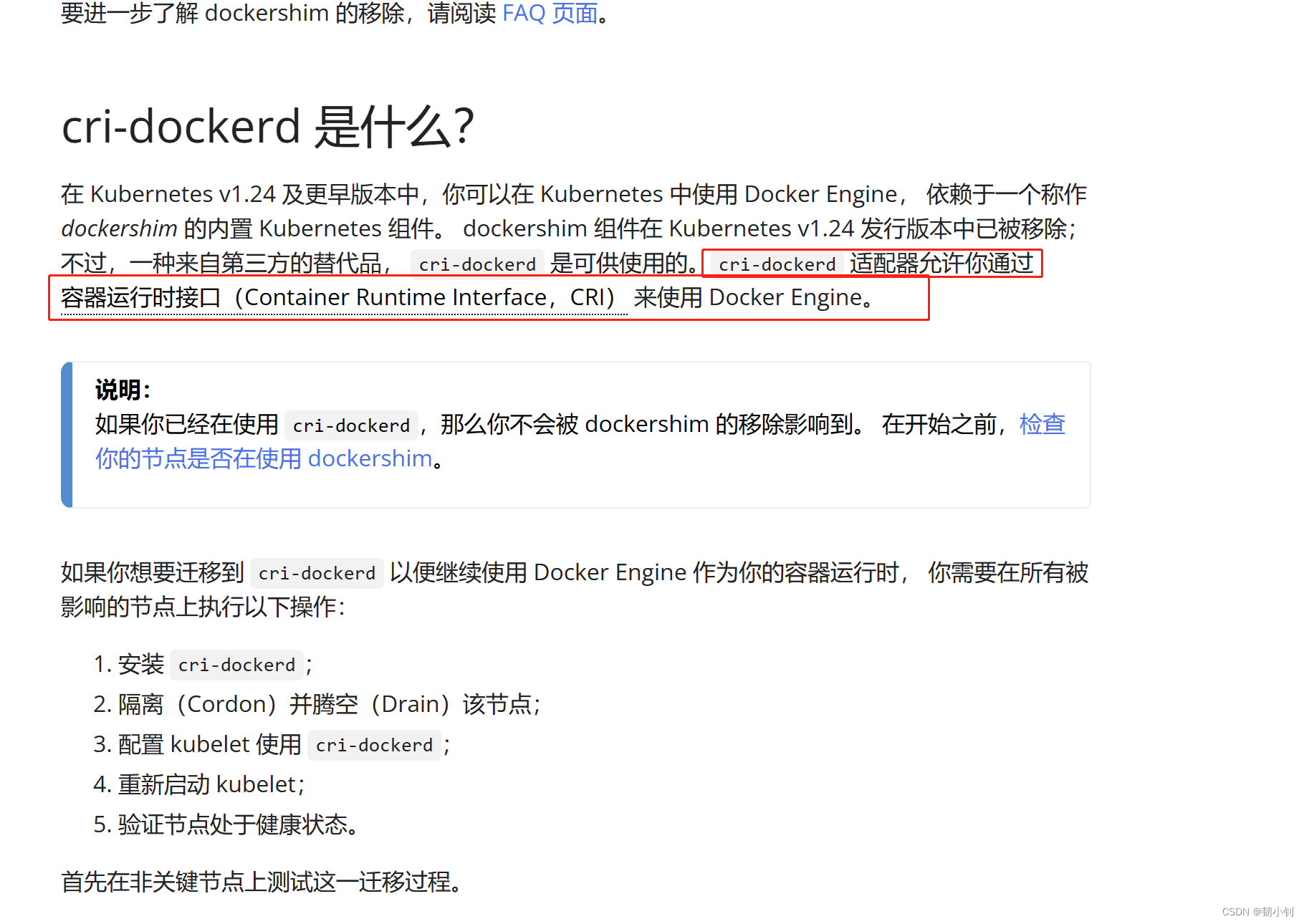
cri-dockerd 是一种基于 Docker 的容器运行时实现,它通过实现 CRI 接口,使 Kubernetes 能够与 Docker 进行交互,创建和管理容器
📕下载rpm安装包
官网说明
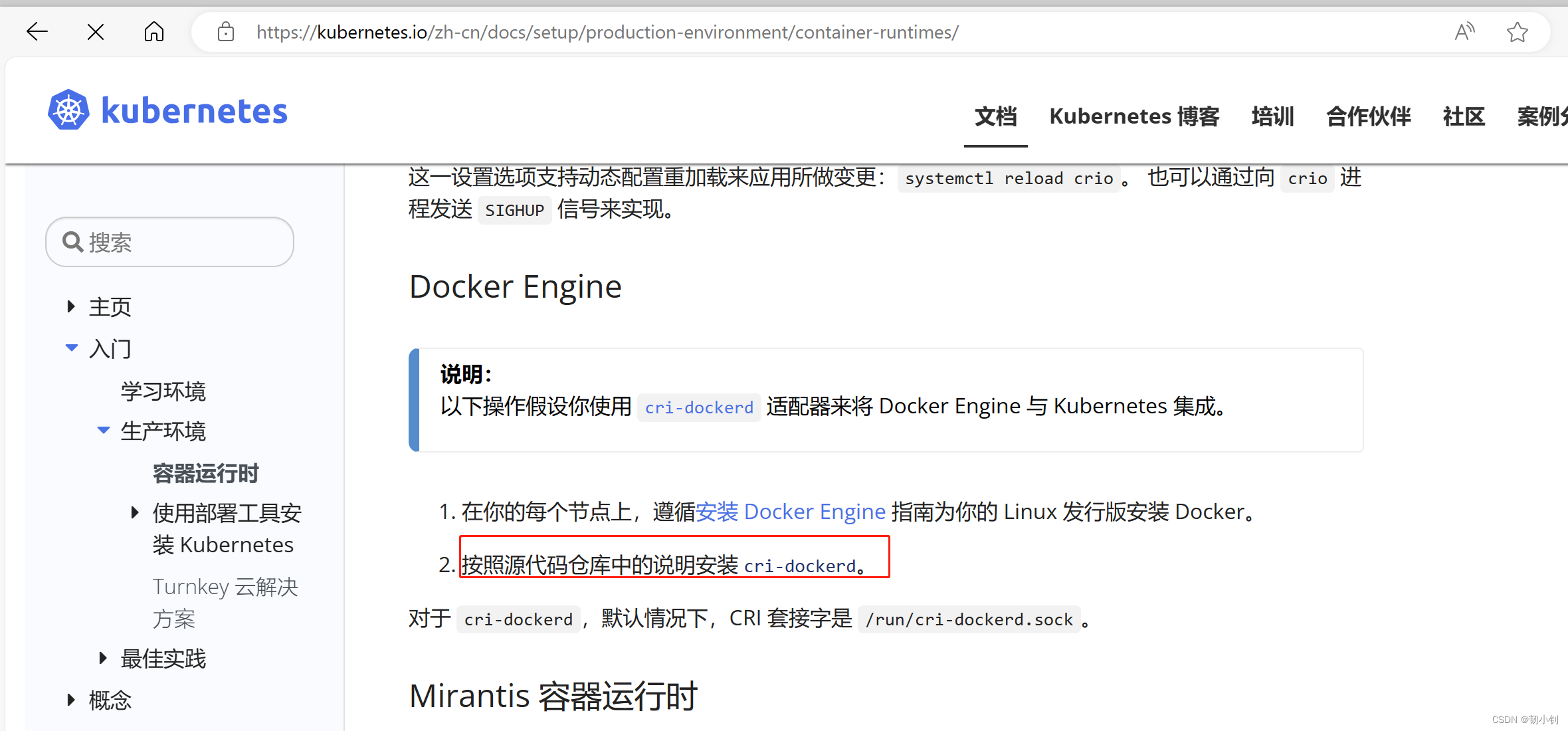
Git地址,直接点击下载丢到服务器(网络好的话可以直接服务器执行sudo wget https://github.com/Mirantis/cri-dockerd/releases/download/v0.3.4/cri-dockerd-0.3.4-3.el7.x86_64.rpm进行下载),下载挺慢…
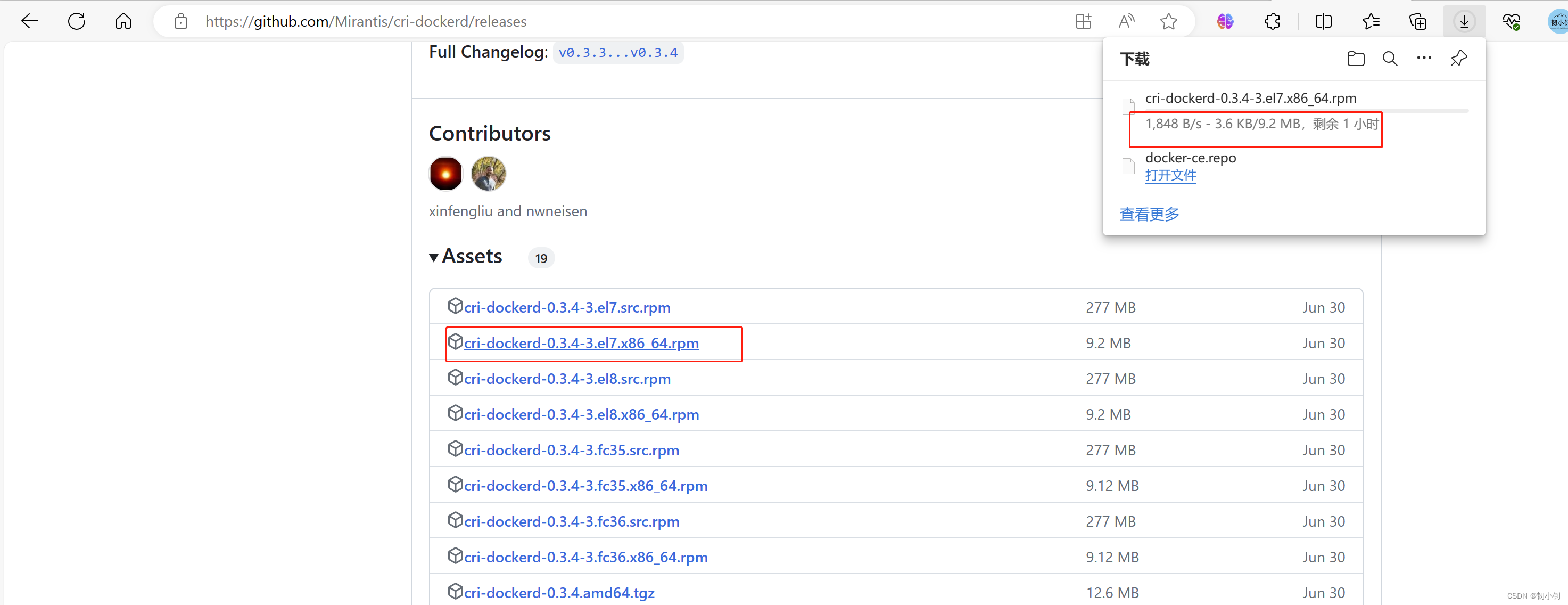
这次反而在环境上下载快一点

心累…明晚继续
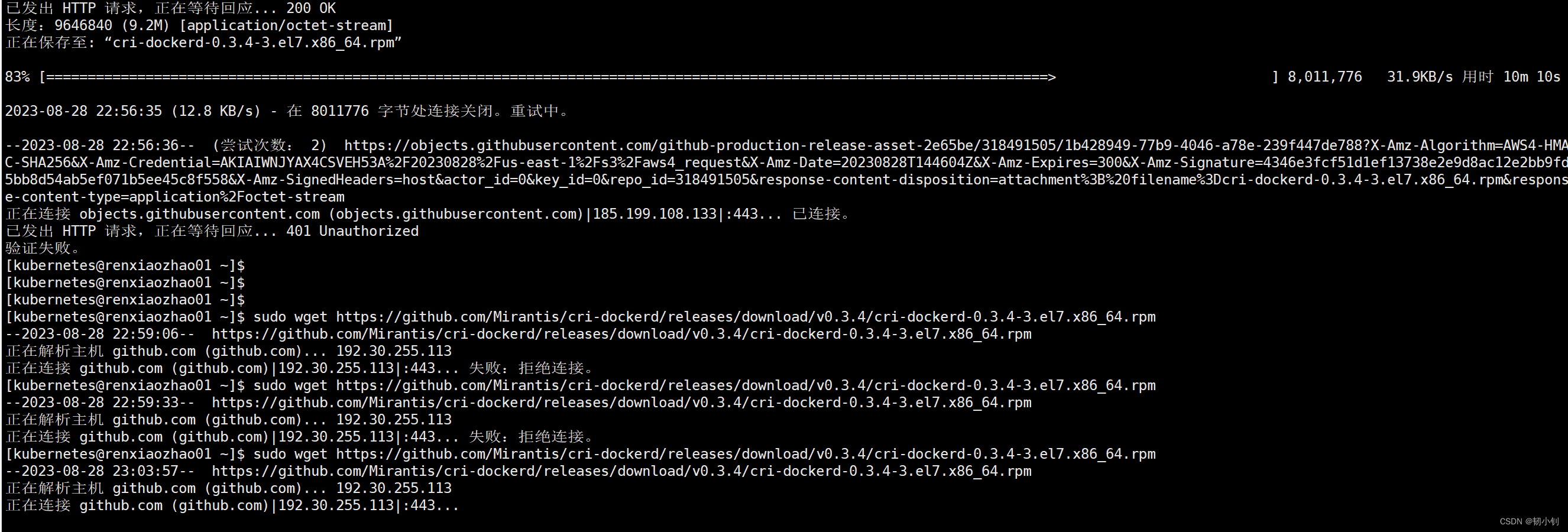

cri-dockerd-0.3.4-3.el7.x86-64.rpm快速下载地址
📕通过rpm安装
没有rpm命令,可以执行yum - y intall rpm 安装该命令
- 通过rpm安装:
sudo rpm -ivh cri-dockerd-0.3.4-3.el7.x86_64.rpm,-i表示安装软件包,-v表示显示详细的安装过程,-h表示显示进度条。

📕启动cri-dockerd
# 重载系统守护进程
sudo systemctl daemon-reload
# 设置cri-dockerd自启动
sudo systemctl enable cri-docker.socket cri-docker
# 启动cri-dockerd
sudo systemctl start cri-docker.socket cri-docker
# 查看cri-dockerd状态
sudo systemctl status cri-docker.socket

📗初始化K8S集群
📕配置/etc/hosts(r1、r2、r3三台机器)
名称添加k8s标识,方便区分,日后部署hadoop集群可以叫hp-master、hp-slave01、hp-slave02
[kubernetes@renxiaozhao01 ~]$ sudo vi /etc/hosts
[kubernetes@renxiaozhao01 ~]$ sudo cat /etc/hosts
127.0.0.1 localhost localhost.localdomain localhost4 localhost4.localdomain4
::1 localhost localhost.localdomain localhost6 localhost6.localdomain6
192.168.17.17 k8s-master
192.168.17.18 k8s-node01
192.168.17.19 k8s-node02
[kubernetes@renxiaozhao01 ~]$ 📕配置初始化系统参数
📘module参数
-
内核模块配置文件
cat <<EOF | sudo tee /etc/modules-load.d/k8s.conf overlay br_netfilter EOF -
加载内核模块:
-
overlay模块是用于支持容器的联合文件系统的 -
br_netfilter模块是用于支持 Kubernetes 网络的桥接和网络过滤功能的。 -
加载命令:
sudo modprobe overlay sudo modprobe br_netfilter -
验证加载是否成功:
lsmod | grep br_netfilter lsmod | grep overlay
-
📘sysctl 参数
net.bridge.bridge-nf-call-iptables:用于启用桥接网络对 iptables 的调用net.bridge.bridge-nf-call-ip6tables: 用于启用桥接网络对 ip6tables 的调用net.ipv4.ip_forward: 用于启用 IP 转发- 参数:
-
配置文件
cat <<EOF | sudo tee /etc/sysctl.d/k8s.conf net.bridge.bridge-nf-call-iptables = 1 net.bridge.bridge-nf-call-ip6tables = 1 net.ipv4.ip_forward = 1 EOF -
生效配置
sudo sysctl --system -
查看配置:
sysctl net.bridge.bridge-nf-call-iptables net.bridge.bridge-nf-call-ip6tables net.ipv4.ip_forward
-
📕Master节点初始化(对应r1机器)
📘kubeadm init
-
官网地址

-
初始化命令
sudo kubeadm init --node-name=k8s-master --image-repository=registry.aliyuncs.com/google_containers --cri-socket=unix:///var/run/cri-dockerd.sock --apiserver-advertise-address=192.168.17.17 --pod-network-cidr=10.244.0.0/16 --service-cidr=10.96.0.0/12
kubeadm init 命令中的参数解释(上面的官网地址中也有解释):
--node-name=k8s-master: 指定k8s集群中Master节点的名称,和上面/etc/hosts配置中192.168.17.17 k8s-master名称一致。--image-repository=registry.aliyuncs.com/google_containers: 指定容器镜像的仓库地址。--cri-socket=unix:///var/run/cri-dockerd.sock: 指定容器运行时的 CRI(Container Runtime Interface)套接字路径(Docker 的配置文件路径通常是 /etc/docker/daemon.json,CRI 套接字路径通常不会在 Docker 的配置文件中直接指定。Kubernetes一般会使用默认的 Docker 套接字路径 /var/run/docker.sock)。--apiserver-advertise-address=192.168.17.17: 指定Kubernetes API Server的地址,即Master节点的IP地址。和上面/etc/hosts配置中192.168.17.17 k8s-master的IP一致--pod-network-cidr=10.244.0.0/16: 指定 Pod 网络的 CIDR(Classless Inter-Domain Routing)地址范围。默认使用这个即可。--service-cidr=10.96.0.0/12: 指定服务网络的 CIDR 地址范围(需要选择一个未被使用的 CIDR 地址范围),一般默认使用这个即可。- 执行成功如下(差点崩溃了,卡了好久,详见问题四)
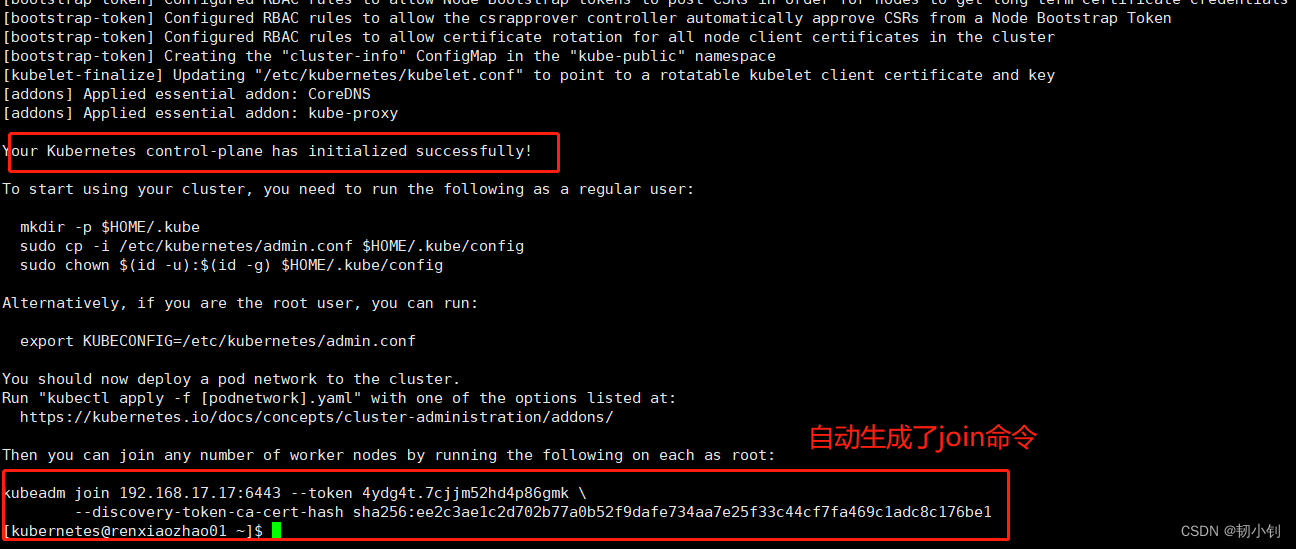
[kubernetes@renxiaozhao01 ~]$ sudo kubeadm init --node-name=k8s-master --image-repository=registry.aliyuncs.com/google_containers --cri-socket=unix:///var/run/cri-dockerd.sock --apiserver-advertise-address=192.168.17.17 --pod-network-cidr=10.244.0.0/16 --service-cidr=10.96.0.0/12 [init] Using Kubernetes version: v1.28.1 [preflight] Running pre-flight checks [preflight] Pulling images required for setting up a Kubernetes cluster [preflight] This might take a minute or two, depending on the speed of your internet connection [preflight] You can also perform this action in beforehand using 'kubeadm config images pull' [certs] Using certificateDir folder "/etc/kubernetes/pki" [certs] Generating "ca" certificate and key [certs] Generating "apiserver" certificate and key [certs] apiserver serving cert is signed for DNS names [k8s-master kubernetes kubernetes.default kubernetes.default.svc kubernetes.default.svc.cluster.local] and IPs [10.96.0.1 192.168.17.17] [certs] Generating "apiserver-kubelet-client" certificate and key [certs] Generating "front-proxy-ca" certificate and key [certs] Generating "front-proxy-client" certificate and key [certs] Generating "etcd/ca" certificate and key [certs] Generating "etcd/server" certificate and key [certs] etcd/server serving cert is signed for DNS names [k8s-master localhost] and IPs [192.168.17.17 127.0.0.1 ::1] [certs] Generating "etcd/peer" certificate and key [certs] etcd/peer serving cert is signed for DNS names [k8s-master localhost] and IPs [192.168.17.17 127.0.0.1 ::1] [certs] Generating "etcd/healthcheck-client" certificate and key [certs] Generating "apiserver-etcd-client" certificate and key [certs] Generating "sa" key and public key [kubeconfig] Using kubeconfig folder "/etc/kubernetes" [kubeconfig] Writing "admin.conf" kubeconfig file [kubeconfig] Writing "kubelet.conf" kubeconfig file [kubeconfig] Writing "controller-manager.conf" kubeconfig file [kubeconfig] Writing "scheduler.conf" kubeconfig file [etcd] Creating static Pod manifest for local etcd in "/etc/kubernetes/manifests" [control-plane] Using manifest folder "/etc/kubernetes/manifests" [control-plane] Creating static Pod manifest for "kube-apiserver" [control-plane] Creating static Pod manifest for "kube-controller-manager" [control-plane] Creating static Pod manifest for "kube-scheduler" [kubelet-start] Writing kubelet environment file with flags to file "/var/lib/kubelet/kubeadm-flags.env" [kubelet-start] Writing kubelet configuration to file "/var/lib/kubelet/config.yaml" [kubelet-start] Starting the kubelet [wait-control-plane] Waiting for the kubelet to boot up the control plane as static Pods from directory "/etc/kubernetes/manifests". This can take up to 4m0s [apiclient] All control plane components are healthy after 16.526647 seconds [upload-config] Storing the configuration used in ConfigMap "kubeadm-config" in the "kube-system" Namespace [kubelet] Creating a ConfigMap "kubelet-config" in namespace kube-system with the configuration for the kubelets in the cluster [upload-certs] Skipping phase. Please see --upload-certs [mark-control-plane] Marking the node k8s-master as control-plane by adding the labels: [node-role.kubernetes.io/control-plane node.kubernetes.io/exclude-from-external-load-balancers] [mark-control-plane] Marking the node k8s-master as control-plane by adding the taints [node-role.kubernetes.io/control-plane:NoSchedule] [bootstrap-token] Using token: 4ydg4t.7cjjm52hd4p86gmk [bootstrap-token] Configuring bootstrap tokens, cluster-info ConfigMap, RBAC Roles [bootstrap-token] Configured RBAC rules to allow Node Bootstrap tokens to get nodes [bootstrap-token] Configured RBAC rules to allow Node Bootstrap tokens to post CSRs in order for nodes to get long term certificate credentials [bootstrap-token] Configured RBAC rules to allow the csrapprover controller automatically approve CSRs from a Node Bootstrap Token [bootstrap-token] Configured RBAC rules to allow certificate rotation for all node client certificates in the cluster [bootstrap-token] Creating the "cluster-info" ConfigMap in the "kube-public" namespace [kubelet-finalize] Updating "/etc/kubernetes/kubelet.conf" to point to a rotatable kubelet client certificate and key [addons] Applied essential addon: CoreDNS [addons] Applied essential addon: kube-proxyYour Kubernetes control-plane has initialized successfully!To start using your cluster, you need to run the following as a regular user:mkdir -p $HOME/.kubesudo cp -i /etc/kubernetes/admin.conf $HOME/.kube/configsudo chown $(id -u):$(id -g) $HOME/.kube/configAlternatively, if you are the root user, you can run:export KUBECONFIG=/etc/kubernetes/admin.confYou should now deploy a pod network to the cluster. Run "kubectl apply -f [podnetwork].yaml" with one of the options listed at:https://kubernetes.io/docs/concepts/cluster-administration/addons/Then you can join any number of worker nodes by running the following on each as root:kubeadm join 192.168.17.17:6443 --token 4ydg4t.7cjjm52hd4p86gmk \--discovery-token-ca-cert-hash sha256:ee2c3ae1c2d702b77a0b52f9dafe734aa7e25f33c44cf7fa469c1adc8c176be1
📘admin.conf
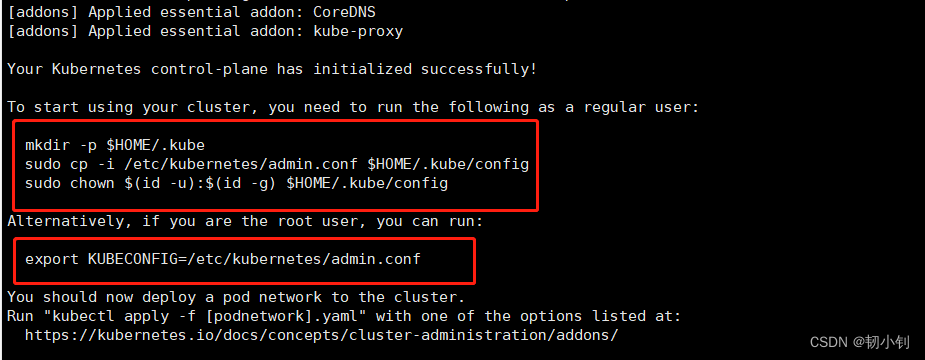
- 参照上面初始化信息还需要执行以下命令(kubernetes用户,如果用root执行的命令):
[kubernetes@renxiaozhao01 ~]$ [kubernetes@renxiaozhao01 ~]$ mkdir -p $HOME/.kube [kubernetes@renxiaozhao01 ~]$ sudo cp -i /etc/kubernetes/admin.conf $HOME/.kube/config [kubernetes@renxiaozhao01 ~]$ sudo chown $(id -u):$(id -g) $HOME/.kube/config [kubernetes@renxiaozhao01 ~]$ [kubernetes@renxiaozhao01 ~]$ - 如果用root执行的命令:
直接执行export KUBECONFIG=/etc/kubernetes/admin.conf临时生效,建议配置放到环境变量文件(非root用户不需要再配置环境变量)
📕安装网络插件(r1、r2、r3机器)
应该是必须安装,一开始没安装,执行下 kubeadm join也可以添加成功(但是状态应该不对),后来 kubeadm join 添加节点名称参数时候一直不成功,然后尝试安装网络插件flannel下载地址,简单记录下吧
- 下载
kube-flannel.yml,指定网络接口名称,搜索kube-subnet-mgr,下面添加- --iface=ens33(对应自己的固定IP网关)
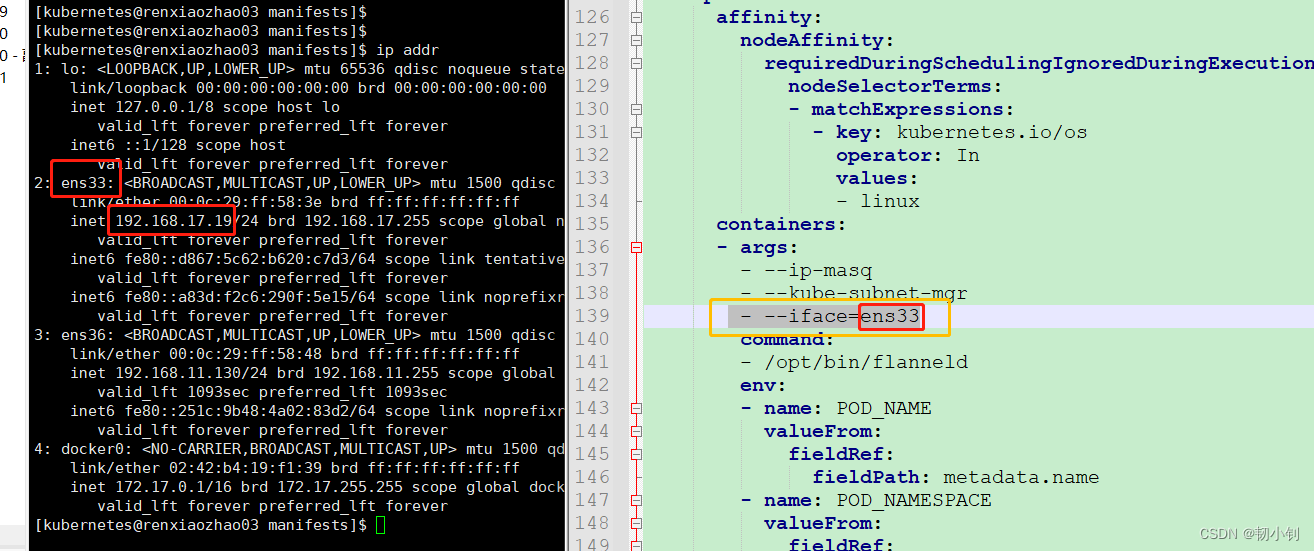
- 直接执行
kubectl apply -f kube-flannel.yml,如果非root用户,添加sudo会报错,很多加sudo执行都会报错localhost:8080 was refused,去掉就好了,有待研究[kubernetes@renxiaozhao03 ~]$ kubectl apply -f kube-flannel.yml namespace/kube-flannel unchanged serviceaccount/flannel unchanged clusterrole.rbac.authorization.k8s.io/flannel unchanged clusterrolebinding.rbac.authorization.k8s.io/flannel unchanged configmap/kube-flannel-cfg unchanged daemonset.apps/kube-flannel-ds unchanged [kubernetes@renxiaozhao03 ~]$ [kubernetes@renxiaozhao03 ~]$ [kubernetes@renxiaozhao03 ~]$ [kubernetes@renxiaozhao03 ~]$ sudo kubectl apply -f kube-flannel.yml The connection to the server localhost:8080 was refused - did you specify the right host or port? [kubernetes@renxiaozhao03 ~]$ [kubernetes@renxiaozhao03 ~]$
📕Node节点假如到Master(对应r2、r3机器)
-
同步
master上的.kube到node上面:scp -r .kube 192.168.17.18:/home/kubernetes/
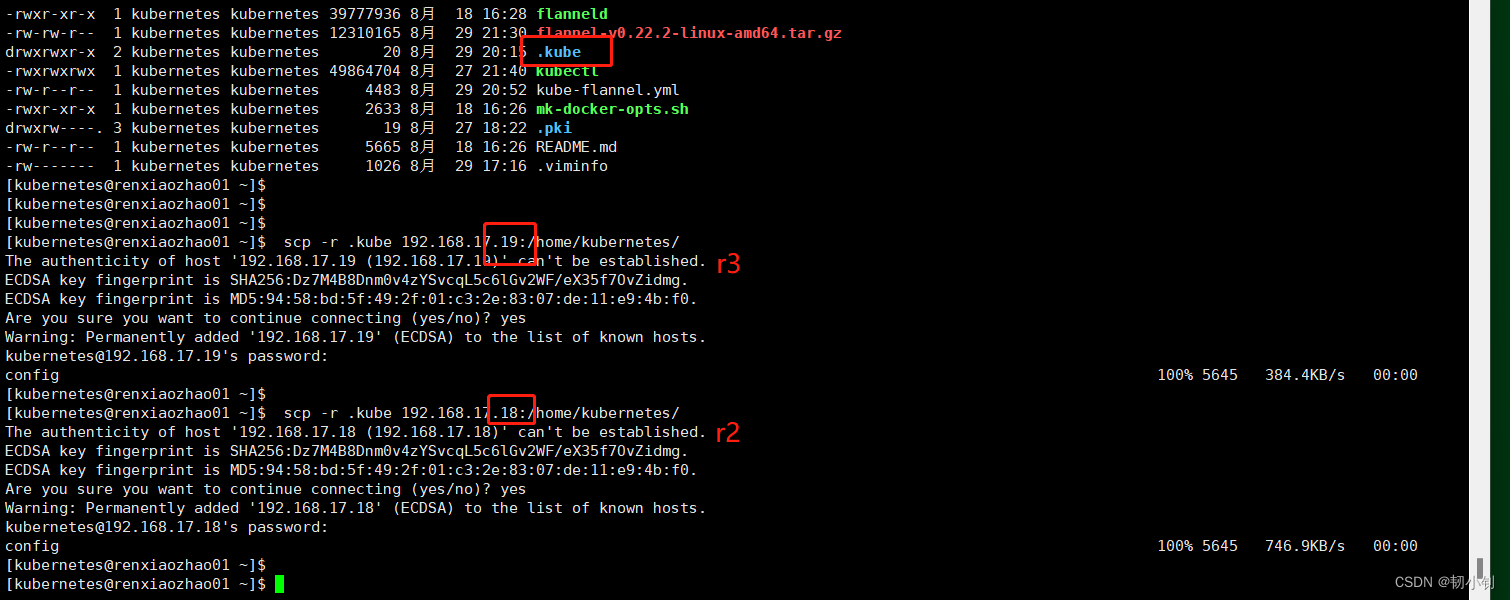
-
同步完验证下
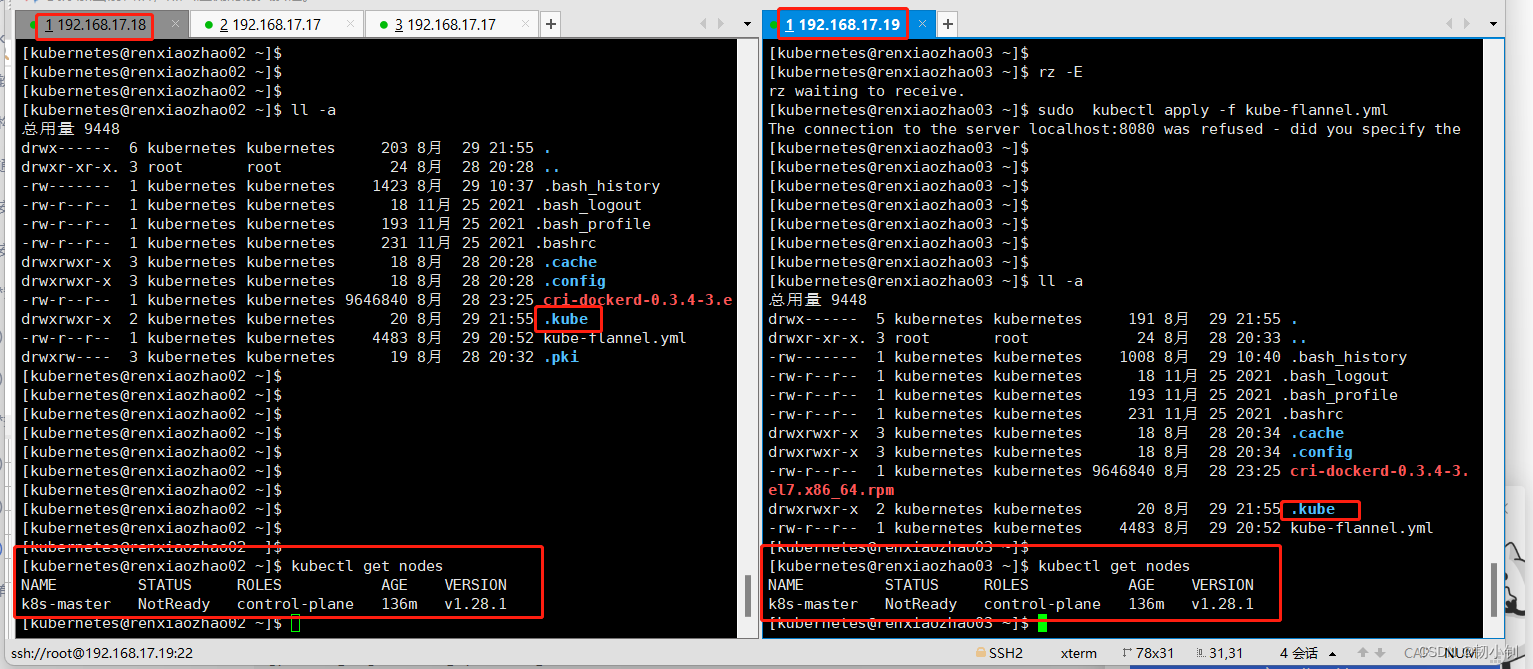
-
执行上文生成的join指令:
sudo kubeadm join 192.168.17.17:6443 --token 4ydg4t.7cjjm52hd4p86gmk --discovery-token-ca-cert-hash sha256:ee2c3ae1c2d702b77a0b52f9dafe734aa7e25f33c44cf7fa469c1adc8c176be1 --cri-socket=unix:///var/run/cri-dockerd.sock
-
添加成功后,查看节点信息
kubectl get nodes有个节点没准备好呀😂,有缘再说吧,累了,不过好像可以确认网络插件属于必装,比如
flannel
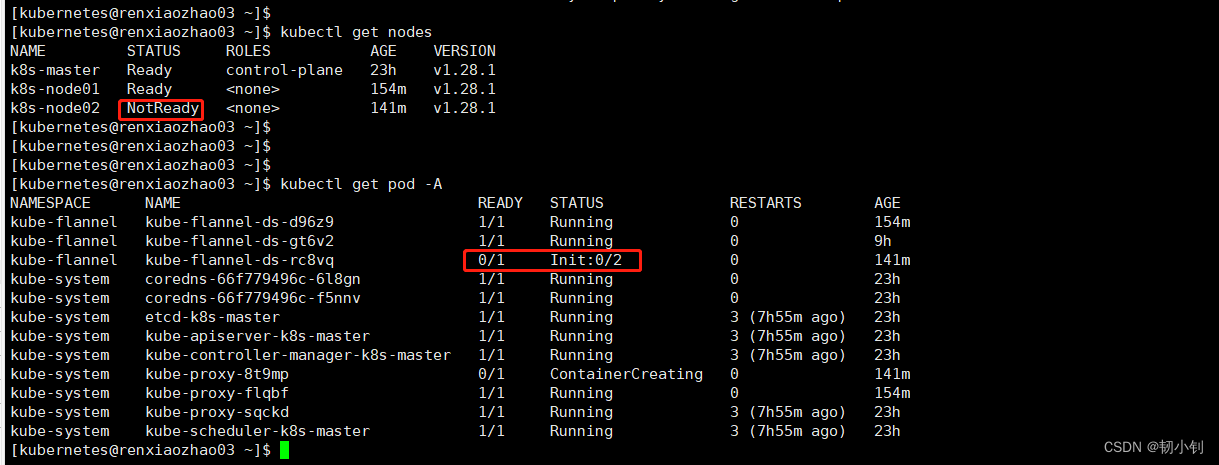
没忍住排查了一下,反正现在好了,就是按照下面的问题四,修改了一下cri-docker.service,然后反复重启了几次😂
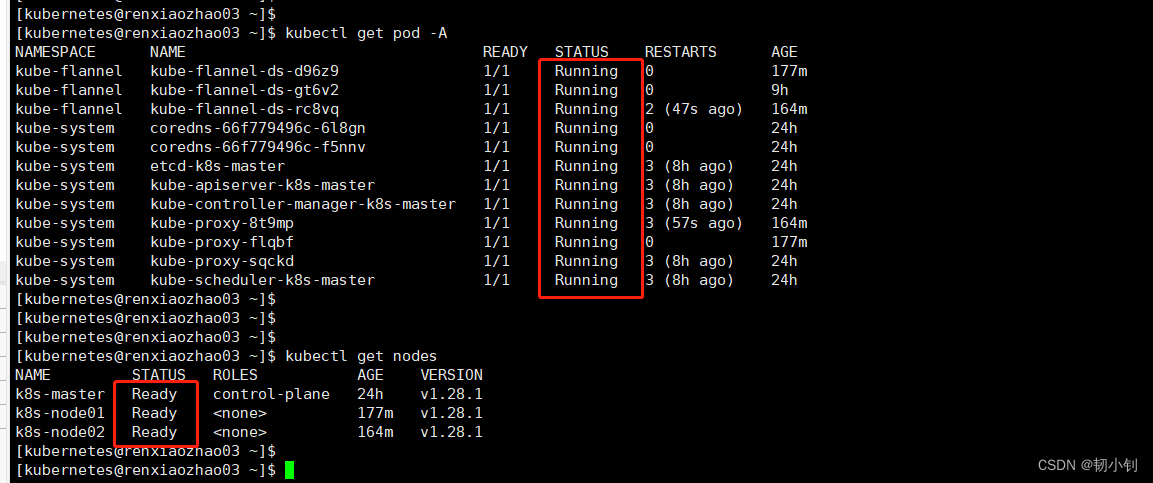
[kubernetes@renxiaozhao03 ~]$ sudo systemctl stop cri-docker [kubernetes@renxiaozhao03 ~]$ #怎么修改参照问题四 [kubernetes@renxiaozhao03 ~]$ sudo vi /usr/lib/systemd/system/cri-docker.service [kubernetes@renxiaozhao03 ~]$ sudo systemctl daemon-reload [kubernetes@renxiaozhao03 ~]$ sudo systemctl start cri-docker [kubernetes@renxiaozhao03 ~]$ sudo systemctl restart kubelet docker cri-docker [kubernetes@renxiaozhao03 ~]$ [kubernetes@renxiaozhao03 ~]$ [kubernetes@renxiaozhao03 ~]$ sudo systemctl restart kubelet docker cri-docker [kubernetes@renxiaozhao03 ~]$ kubectl get pod -A|grep kube-flannel-ds-rc8vq kube-flannel kube-flannel-ds-rc8vq 1/1 Running 2 (33s ago) 164m [kubernetes@renxiaozhao03 ~]$
📚总结
略
⁉️问题记录
❓问题一:yum安装软件提示“网络不可达”
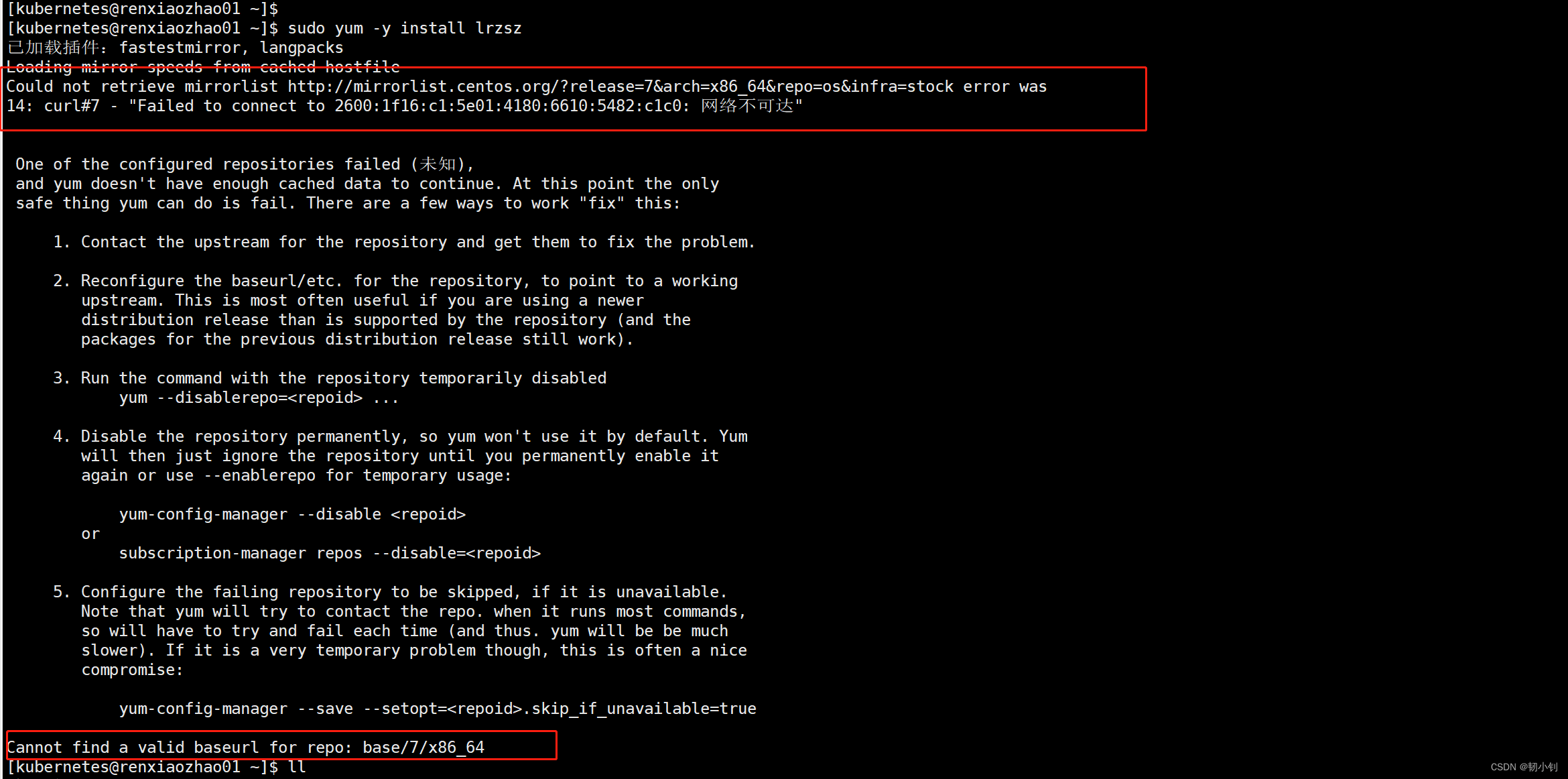
[kubernetes@renxiaozhao01 ~]$ sudo yum -y install lrzsz
已加载插件:fastestmirror, langpacks
Loading mirror speeds from cached hostfile
Could not retrieve mirrorlist http://mirrorlist.centos.org/?release=7&arch=x86_64&repo=os&infra=stock error was
14: curl#7 - "Failed to connect to 2600:1f16:c1:5e01:4180:6610:5482:c1c0: 网络不可达"One of the configured repositories failed (未知),and yum doesn't have enough cached data to continue. At this point the onlysafe thing yum can do is fail. There are a few ways to work "fix" this:1. Contact the upstream for the repository and get them to fix the problem.2. Reconfigure the baseurl/etc. for the repository, to point to a workingupstream. This is most often useful if you are using a newerdistribution release than is supported by the repository (and thepackages for the previous distribution release still work).3. Run the command with the repository temporarily disabledyum --disablerepo=<repoid> ...4. Disable the repository permanently, so yum won't use it by default. Yumwill then just ignore the repository until you permanently enable itagain or use --enablerepo for temporary usage:yum-config-manager --disable <repoid>orsubscription-manager repos --disable=<repoid>5. Configure the failing repository to be skipped, if it is unavailable.Note that yum will try to contact the repo. when it runs most commands,so will have to try and fail each time (and thus. yum will be be muchslower). If it is a very temporary problem though, this is often a nicecompromise:yum-config-manager --save --setopt=<repoid>.skip_if_unavailable=trueCannot find a valid baseurl for repo: base/7/x86_64❗解决方式一:重启虚拟机网络sudo systemctl restart network
从公司回到家,切换了网络,虚拟机已经重启了,ping www.baidu.com也是通的,后面又试了一下,发现不通了,突然想起来中间切换过一次无线网络,重启网络就好了,原因还是本地网络不好,不稳(长城宽带😂)
[kubernetes@renxiaozhao01 yum.repos.d]$ curl https://www.baidu.com/
curl: (7) Failed connect to www.baidu.com:443; 没有到主机的路由
执行重启命令:sudo systemctl restart network
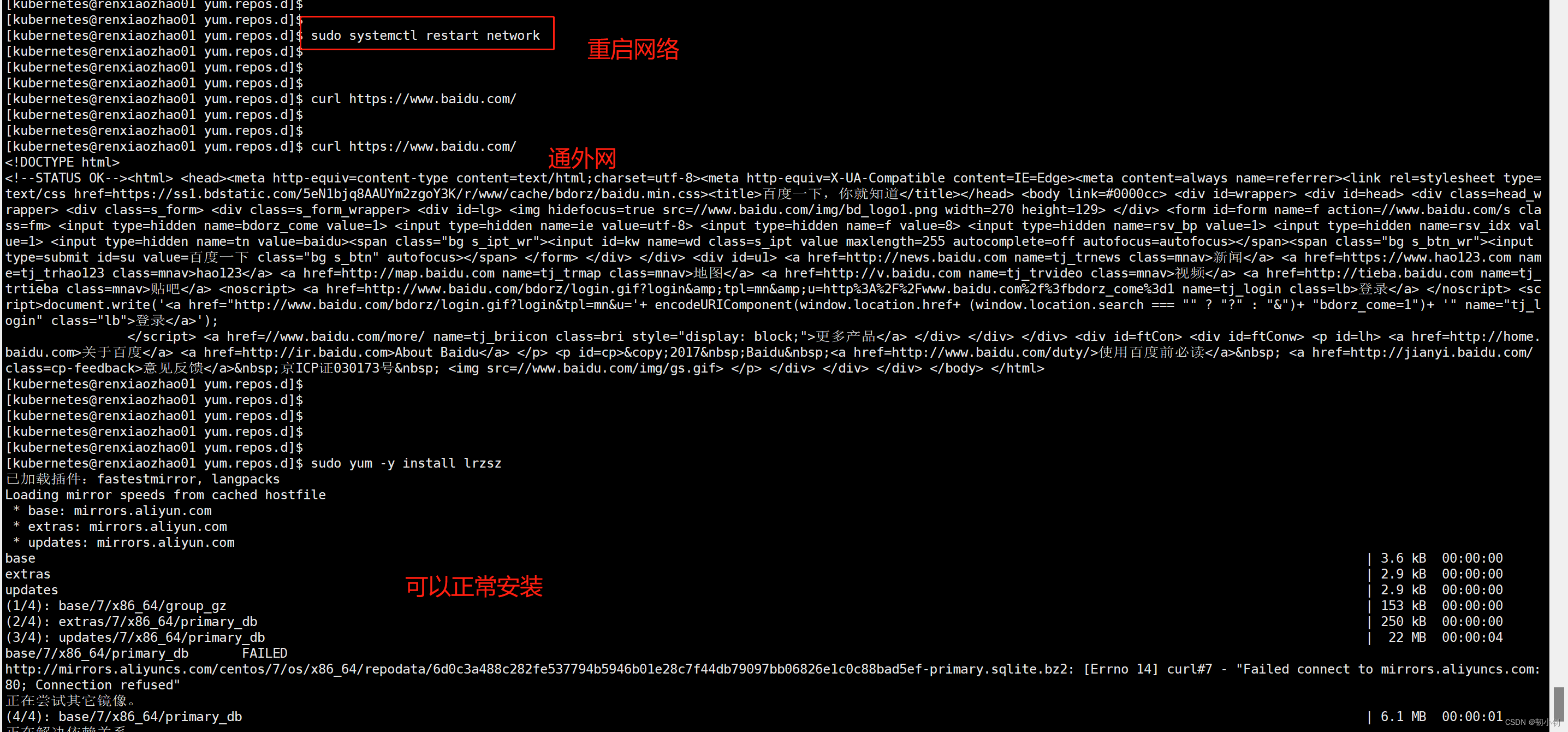
❕其他:替换镜像地址为阿里云的命令
sudo curl -o /etc/yum.repos.d/CentOS-Base.repo http://mirrors.aliyun.com/repo/Centos-7.repo
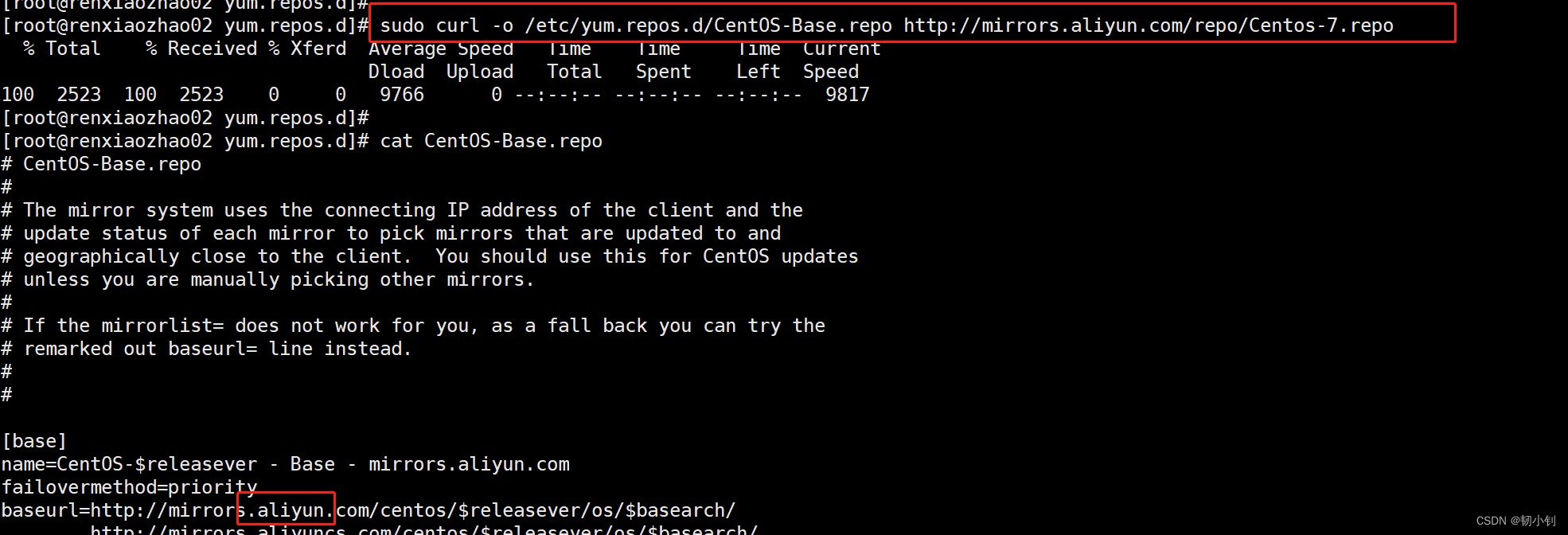
❓问题二:容器运行时名词解释
容器运行时:用于指代用于创建、打包和运行容器的软件组件
-
容器运行时是
负责管理和执行容器的主要组件- 负责加载和运行容器镜像,创建和管理容器的生命周期,并提供与容器交互的接口
- 负责处理容器的资源隔离、网络和存储配置等方面
-
常见的容器运行时包括
Docker、containerd、CRI-O等
❓问题三:获取阿里云镜像加速器地址步骤
- 获取镜像加速器地址方法

- 直接支付宝扫码登录阿里云容器镜像服务
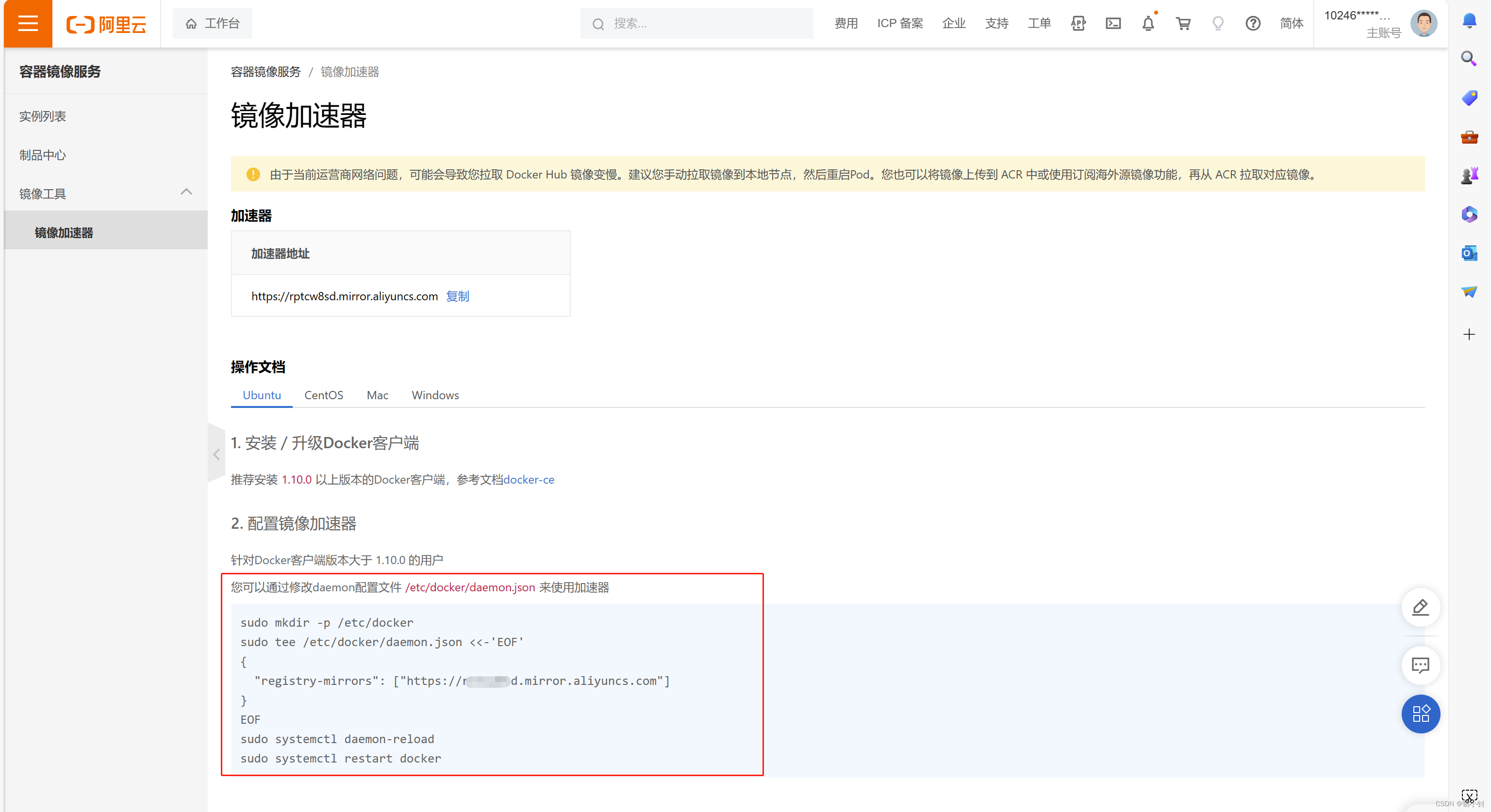
❓问题四:kubeadm init执行失败
[init] Using Kubernetes version: v1.28.1
[preflight] Running pre-flight checks
[preflight] Pulling images required for setting up a Kubernetes cluster
[preflight] This might take a minute or two, depending on the speed of your internet connection
[preflight] You can also perform this action in beforehand using 'kubeadm config images pull'
W0829 19:08:22.039382 55875 checks.go:835] detected that the sandbox image "registry.k8s.io/pause:3.6" of the container runtime is inconsistent with that used by kubeadm. It is recommended that using "registry.aliyuncs.com/google_containers/pause:3.9" as the CRI sandbox image.
[certs] Using certificateDir folder "/etc/kubernetes/pki"
[certs] Generating "ca" certificate and key
[certs] Generating "apiserver" certificate and key
[certs] apiserver serving cert is signed for DNS names [k8s-master kubernetes kubernetes.default kubernetes.default.svc kubernetes.default.svc.cluster.local] and IPs [10.96.0.1 192.168.17.17]
[certs] Generating "apiserver-kubelet-client" certificate and key
[certs] Generating "front-proxy-ca" certificate and key
[certs] Generating "front-proxy-client" certificate and key
[certs] Generating "etcd/ca" certificate and key
[certs] Generating "etcd/server" certificate and key
[certs] etcd/server serving cert is signed for DNS names [k8s-master localhost] and IPs [192.168.17.17 127.0.0.1 ::1]
[certs] Generating "etcd/peer" certificate and key
[certs] etcd/peer serving cert is signed for DNS names [k8s-master localhost] and IPs [192.168.17.17 127.0.0.1 ::1]
[certs] Generating "etcd/healthcheck-client" certificate and key
[certs] Generating "apiserver-etcd-client" certificate and key
[certs] Generating "sa" key and public key
[kubeconfig] Using kubeconfig folder "/etc/kubernetes"
[kubeconfig] Writing "admin.conf" kubeconfig file
[kubeconfig] Writing "kubelet.conf" kubeconfig file
[kubeconfig] Writing "controller-manager.conf" kubeconfig file
[kubeconfig] Writing "scheduler.conf" kubeconfig file
[etcd] Creating static Pod manifest for local etcd in "/etc/kubernetes/manifests"
[control-plane] Using manifest folder "/etc/kubernetes/manifests"
[control-plane] Creating static Pod manifest for "kube-apiserver"
[control-plane] Creating static Pod manifest for "kube-controller-manager"
[control-plane] Creating static Pod manifest for "kube-scheduler"
[kubelet-start] Writing kubelet environment file with flags to file "/var/lib/kubelet/kubeadm-flags.env"
[kubelet-start] Writing kubelet configuration to file "/var/lib/kubelet/config.yaml"
[kubelet-start] Starting the kubelet
[wait-control-plane] Waiting for the kubelet to boot up the control plane as static Pods from directory "/etc/kubernetes/manifests". This can take up to 4m0s
[kubelet-check] Initial timeout of 40s passed.Unfortunately, an error has occurred:timed out waiting for the conditionThis error is likely caused by:- The kubelet is not running- The kubelet is unhealthy due to a misconfiguration of the node in some way (required cgroups disabled)If you are on a systemd-powered system, you can try to troubleshoot the error with the following commands:- 'systemctl status kubelet'- 'journalctl -xeu kubelet'Additionally, a control plane component may have crashed or exited when started by the container runtime.
To troubleshoot, list all containers using your preferred container runtimes CLI.
Here is one example how you may list all running Kubernetes containers by using crictl:- 'crictl --runtime-endpoint unix:///var/run/cri-dockerd.sock ps -a | grep kube | grep -v pause'Once you have found the failing container, you can inspect its logs with:- 'crictl --runtime-endpoint unix:///var/run/cri-dockerd.sock logs CONTAINERID'
error execution phase wait-control-plane: couldn't initialize a Kubernetes cluster
To see the stack trace of this error execute with --v=5 or higher
❓错误详情一:detected that the sandbox image "registry.k8s.io/pause:3.6" of the container runtime is inconsistent with that used by kubeadm. It is recommended that using "registry.aliyuncs.com/google_containers/pause:3.9" as the CRI sandbox image
❓错误详情二:[kubelet-check] Initial timeout of 40s passed.
❗最终解决:修改vi /usr/lib/systemd/system/cri-docker.service
错误详情一通过修改cri-docker.service解决,错误详情二由错误详情一导致

解决步骤:
-
停止cri-docker服务:
sudo systemctl stop cri-docker -
编辑
vi /usr/lib/systemd/system/cri-docker.service- 找到ExecStart,在后面添加
--pod-infra-container-image=registry.aliyuncs.com/google_containers/pause:3.9ExecStart=/usr/bin/cri-dockerd --container-runtime-endpoint fd:// --pod-infra-container-image=registry.aliyuncs.com/google_containers/pause:3.9
- 找到ExecStart,在后面添加
-
重新加载服务:
sudo systemctl daemon-reload -
启动cri-docker服务:
sudo systemctl start cri-docker -
查看cri-docker服务状态:
sudo systemctl start cri-docker
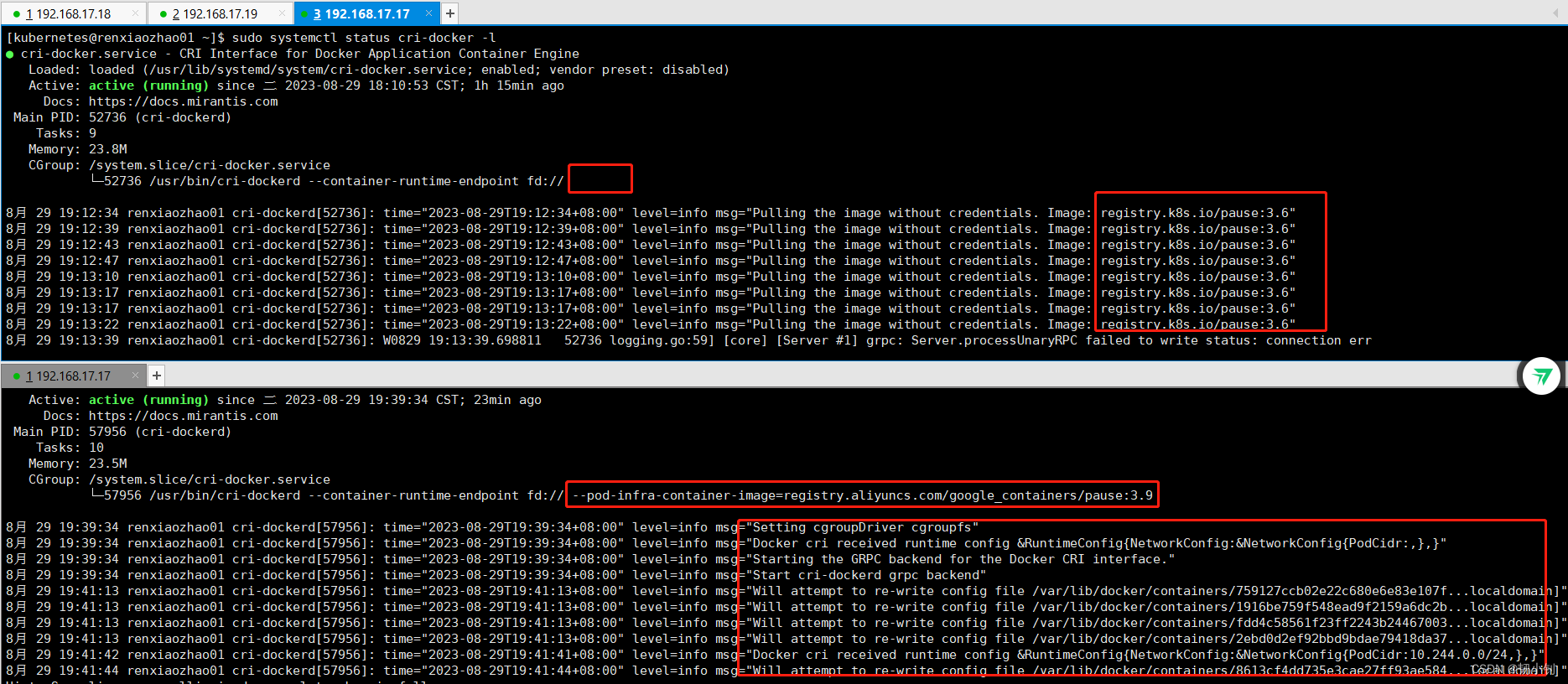
[kubernetes@renxiaozhao01 ~]$ sudo kubectl apply -f kube-flannel.yml
The connection to the server localhost:8080 was refused - did you specify the right host or port?
❓问题五:kubeadm join执行失败
❓错误详情一:[WARNING Hostname]: hostname "renxiaozhao03"could not be reached
虽然是警告信息,但是名称和IP都不是我之前在/etc/hosts中设置的,所以肯定不对对
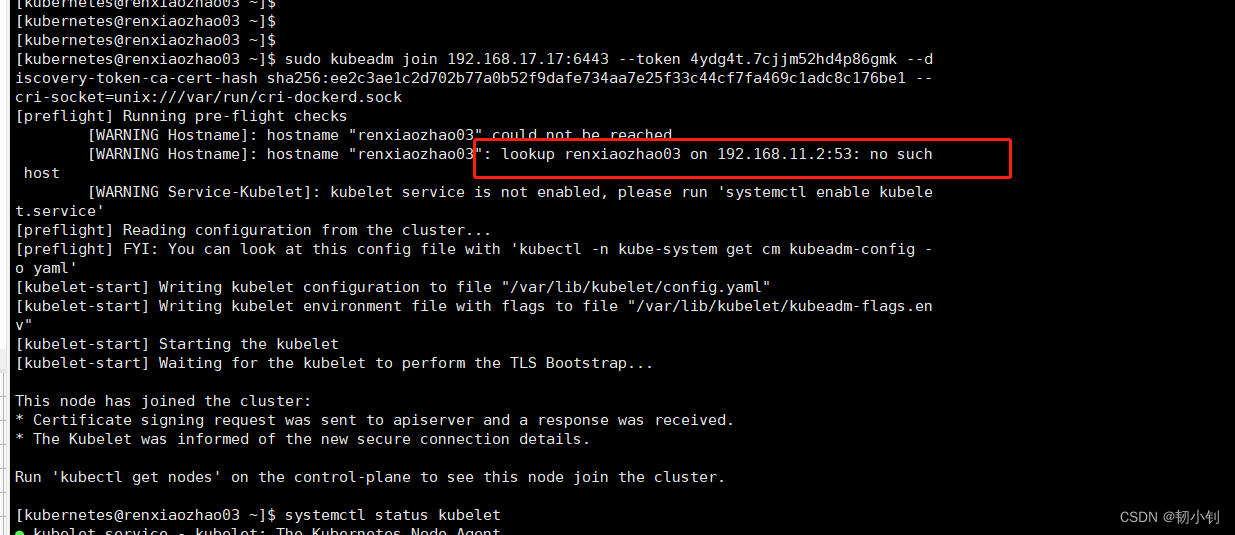
❗解决方式添加--node-name参数,指定主机名
指定--node-name k8s-node02,中间=加不加都可以,不加就用空格
sudo kubeadm join 192.168.17.17:6443 --node-name=k8s-node02 --token 4ydg4t.7cjjm52hd4p86gmk --discovery-token-ca-cert-hash sha256:ee2c3ae1c2d702b77a0b52f9dafe734aa7e25f33c44cf7fa469c1adc8c176be1 --cri-socket=unix:///var/run/cri-dockerd.sock
其中--cri-socket=unix:///var/run/cri-dockerd.sock也是根据错误提示新指定的参数,其中containerd不知道是不是那个组件自带的,博主只装了cri-dockerd,这一块也迷糊,一方面查资料使用docker容器,必须安装cri-dockerd,一方面又说只要containerd,一步步来吧,先跑起来集群再深究
[kubernetes@renxiaozhao02 .kube]$ sudo kubeadm join 192.168.17.17:6443 --node-name=k8s-node02 --token 4ydg4t.7cjjm52hd4p86gmk --discovery-token-ca-cert-hash sha256:ee2c3ae1c2d702b77a0b52f9dafe734aa7e25f33c44cf7fa469c1adc8c176be1
Found multiple CRI endpoints on the host. Please define which one do you wish to use by setting the 'criSocket' field in the kubeadm configuration file: unix:///var/run/containerd/containerd.sock, unix:///var/run/cri-dockerd.sock
To see the stack trace of this error execute with --v=5 or higher
❓错误详情二:超时报错error execution phase kubelet-start: error uploading crisocket: nodes "k8s-node01" not found
[kubernetes@renxiaozhao02 .kube]$ sudo systemctl stop kubelet
[kubernetes@renxiaozhao02 .kube]$ sudo rm -rf /etc/kubernetes/*
[kubernetes@renxiaozhao02 .kube]$ sudo kubeadm join 192.168.17.17:6443 --token urwtz8.3tvnbe2a63b3fnbl --discovery-token-ca-cert-hash sha256:ee2c3ae1c2d702b77a0b52f9dafe734aa7e25f33c44cf7fa469c1adc8c176be1 --node-name k8s-node01 --cri-socket=unix:///var/run/cri-dockerd.sock
[preflight] Running pre-flight checks
[preflight] Reading configuration from the cluster...
[preflight] FYI: You can look at this config file with 'kubectl -n kube-system get cm kubeadm-config -o yaml'
[kubelet-start] Writing kubelet configuration to file "/var/lib/kubelet/config.yaml"
[kubelet-start] Writing kubelet environment file with flags to file "/var/lib/kubelet/kubeadm-flags.env"
[kubelet-start] Starting the kubelet
[kubelet-start] Waiting for the kubelet to perform the TLS Bootstrap...
[kubelet-check] Initial timeout of 40s passed.
error execution phase kubelet-start: error uploading crisocket: nodes "k8s-node01" not found
To see the stack trace of this error execute with --v=5 or higher
[kubernetes@renxiaozhao02 .kube]$ ❗解决方式使用kubeadm reset重置之后再添加join
不要通过上面删除的方式,博主之前添加成功过renxiaozhao02节点(不指定--node-name,默认就是主机名),虽然节点已经删除了,但是貌似有残留,直接在node几点机器执行kubeadm reset,然后再添加,成功
[kubernetes@renxiaozhao03 ~]$ sudo kubeadm reset --cri-socket=unix:///var/run/cri-dockerd.sock
W0830 17:11:12.123313 25230 preflight.go:56] [reset] WARNING: Changes made to this host by 'kubeadm init' or 'kubeadm join' will be reverted.
[reset] Are you sure you want to proceed? [y/N]: y
[preflight] Running pre-flight checks
W0830 17:11:14.355783 25230 removeetcdmember.go:106] [reset] No kubeadm config, using etcd pod spec to get data directory
[reset] Deleted contents of the etcd data directory: /var/lib/etcd
[reset] Stopping the kubelet service
[reset] Unmounting mounted directories in "/var/lib/kubelet"
[reset] Deleting contents of directories: [/etc/kubernetes/manifests /var/lib/kubelet /etc/kubernetes/pki]
[reset] Deleting files: [/etc/kubernetes/admin.conf /etc/kubernetes/kubelet.conf /etc/kubernetes/bootstrap-kubelet.conf /etc/kubernetes/controller-manager.conf /etc/kubernetes/scheduler.conf]The reset process does not clean CNI configuration. To do so, you must remove /etc/cni/net.dThe reset process does not reset or clean up iptables rules or IPVS tables.
If you wish to reset iptables, you must do so manually by using the "iptables" command.If your cluster was setup to utilize IPVS, run ipvsadm --clear (or similar)
to reset your system's IPVS tables.The reset process does not clean your kubeconfig files and you must remove them manually.
Please, check the contents of the $HOME/.kube/config file.
[kubernetes@renxiaozhao03 ~]$ #验证有没有用到ipvs(gpt说的,咋说呢,被它带着走了很远的路)
[kubernetes@renxiaozhao03 ~]$ kubectl get svc -A | grep ipvs
[kubernetes@renxiaozhao03 ~]$
[kubernetes@renxiaozhao03 ~]$
[kubernetes@renxiaozhao03 ~]$ #验证有没有用到 CNI
[kubernetes@renxiaozhao03 ~]$ kubectl get svc -A | grep cni -i

🦒弯路历程
- 重新
join会报错,之前已经生成了相关文件,报文件已存在,直接执行了删除,结果引发新的错
直接sudo systemctl stop kubelet sudo rm -rf /etc/kubernetes/*sudo rm -rf /etc/kubernetes/*,结果引发了新的报错/etc/kubernetes/manifests不存在(后来网上看了下,好像本来就没有这个目录,不是删除引起的),也不知道之前有没有这个文件,貌似只有master节点会用到,最终解决方式是直接把mastre节点上的该目录同步过来,或者直接创建mkdir -p /etc/kubernetes/manifests,应该也可以

查看kubelet日志:sudo journalctl -u kubelet(也被坑了,一开始没注意,这个命令日志不自动换行),改用sudo journalctl -u kubelet --no-pager --follow Unable to register node with API server" err="nodes \"k8s-node01\" is forbidden: node \"renxiaozhao02\" is not allowed to modify node \"k8s-node01\"" node="k8s-node01"
目录同步过来之后有报错,通过sudo journalctl -u kubelet --no-pager --follow可以准确的查看日志8月 30 15:37:47 renxiaozhao02 kubelet[9469]: I0830 15:37:47.153840 9469 kubelet_node_status.go:70] "Attempting to register node" node="k8s-node01" 8月 30 15:37:47 renxiaozhao02 kubelet[9469]: E0830 15:37:47.160006 9469 kubelet_node_status.go:92] "Unable to register node with API server" err="nodes \"k8s-node01\" is forbidden: node \"renxiaozhao02\" is not allowed to modify node \"k8s-node01\"" node="k8s-node01" 8月 30 15:37:47 renxiaozhao02 kubelet[9469]: I0830 15:37:47.283440 9469 scope.go:117] "RemoveContainer" containerID="b0ab74aedc14936c3f0e95682f257b3a8981ecb3e9e36b590a35d65c3eafbd16" 8月 30 15:37:47 renxiaozhao02 kubelet[9469]: E0830 15:37:47.284025 9469 pod_workers.go:1300] "Error syncing pod, skipping" err="failed to \"StartContainer\" for \"kube-scheduler\" with CrashLoopBackOff: \"back-off 5m0s restarting failed container=kube-scheduler pod=kube-scheduler-k8s-node01_kube-system(7734ba1e9e5564ed51f1e93da8155ae7)\"" pod="kube-system/kube-scheduler-k8s-node01" podUID="7734ba1e9e5564ed51f1e93da8155ae7"
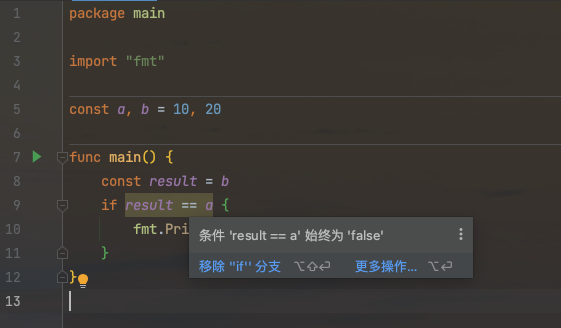
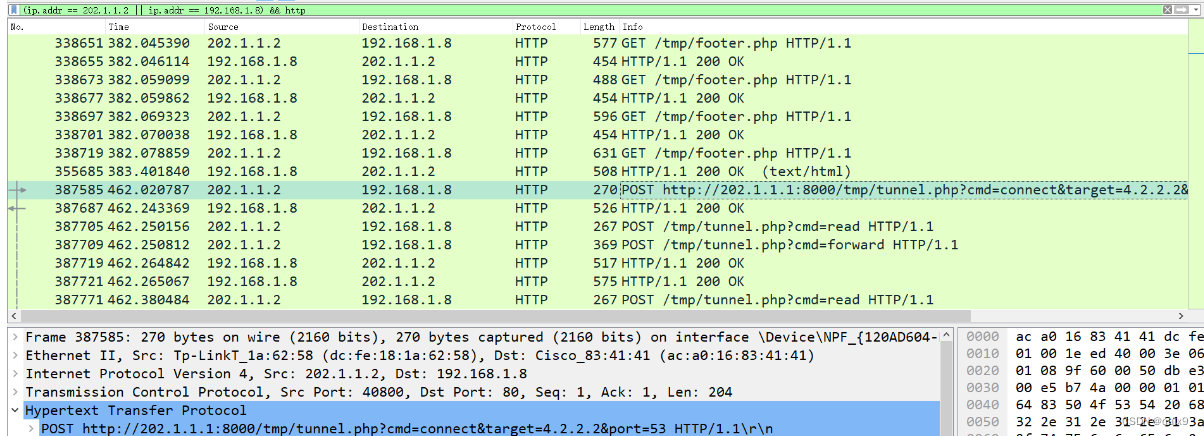
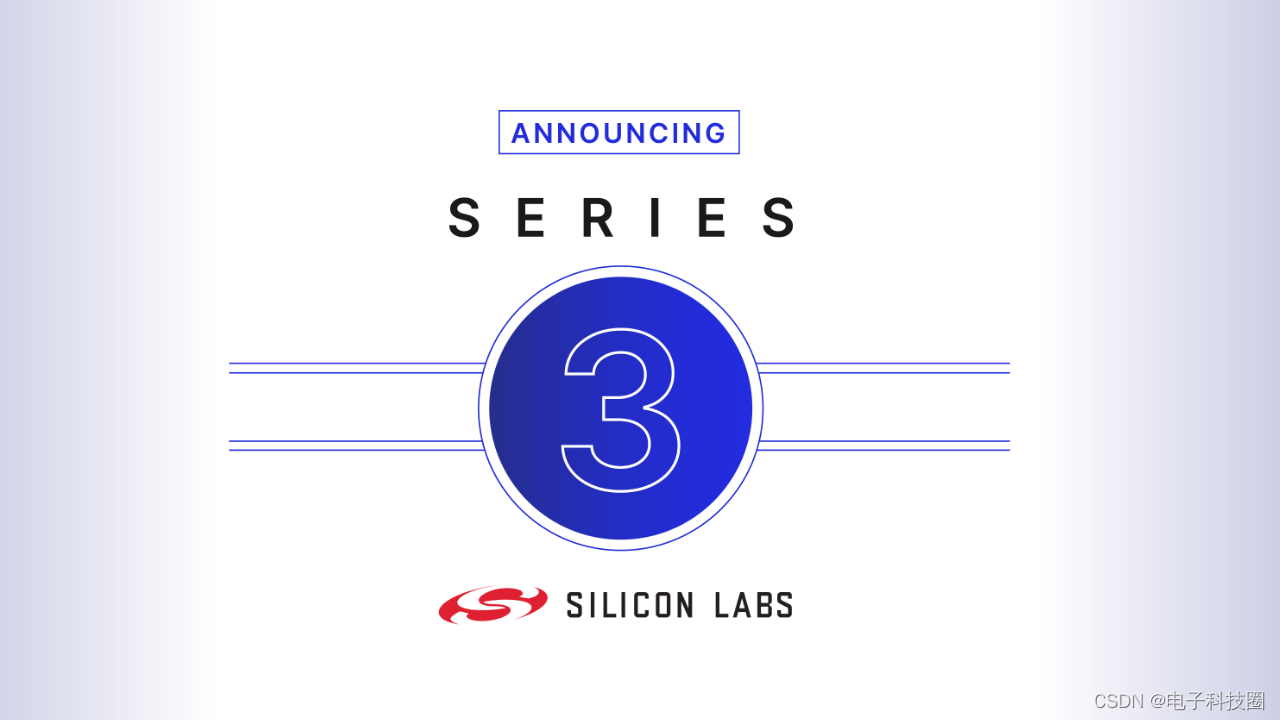
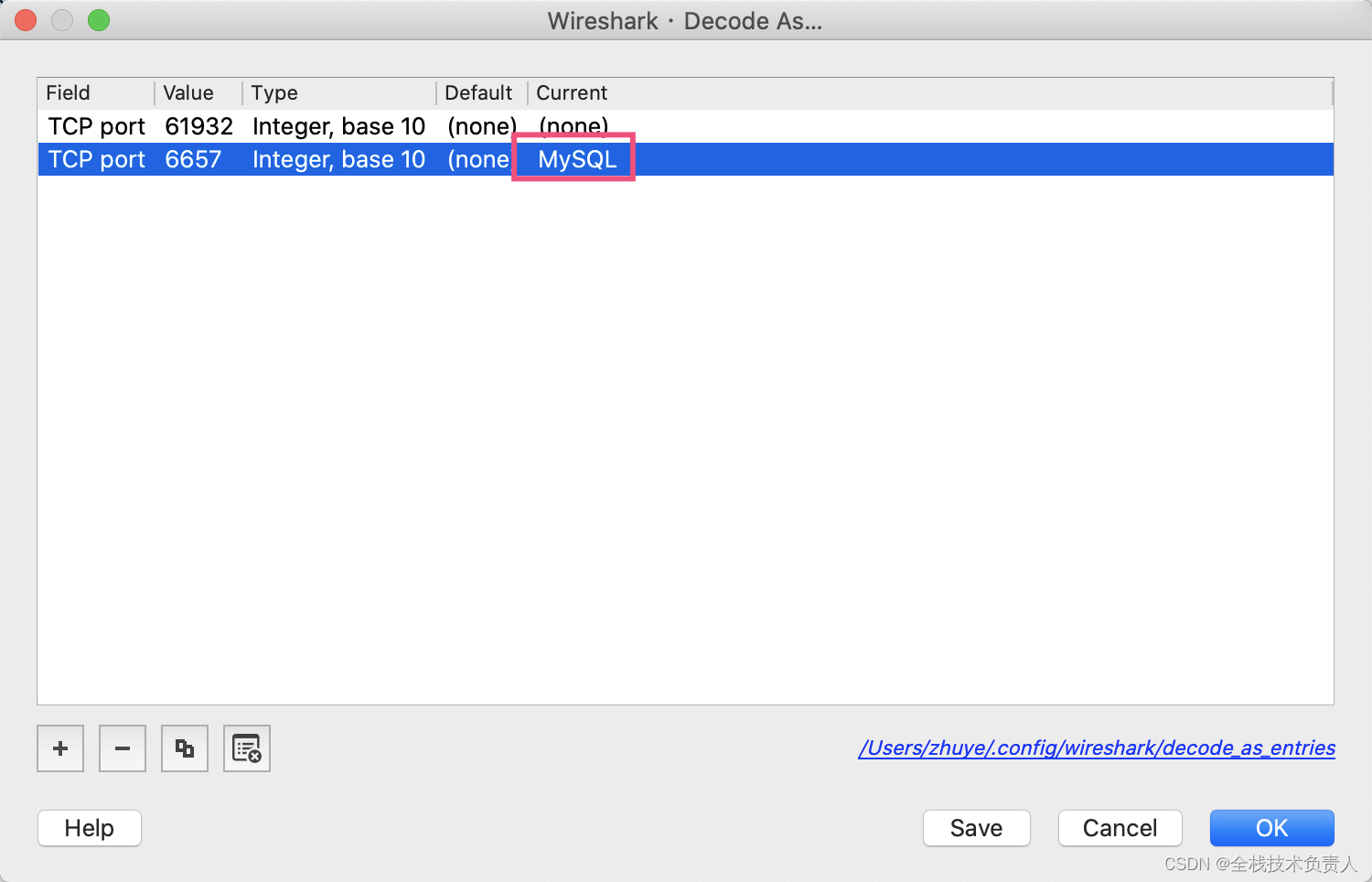

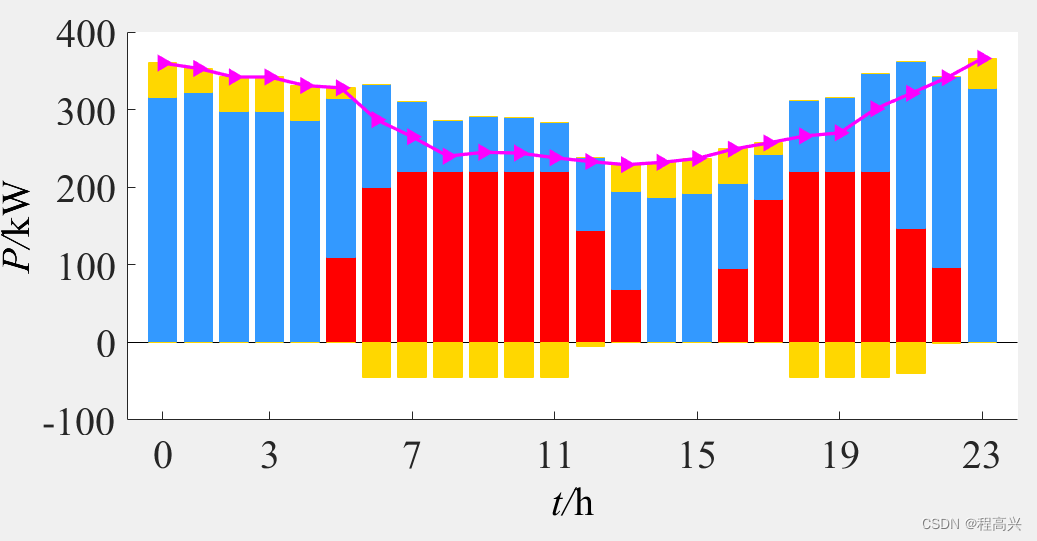

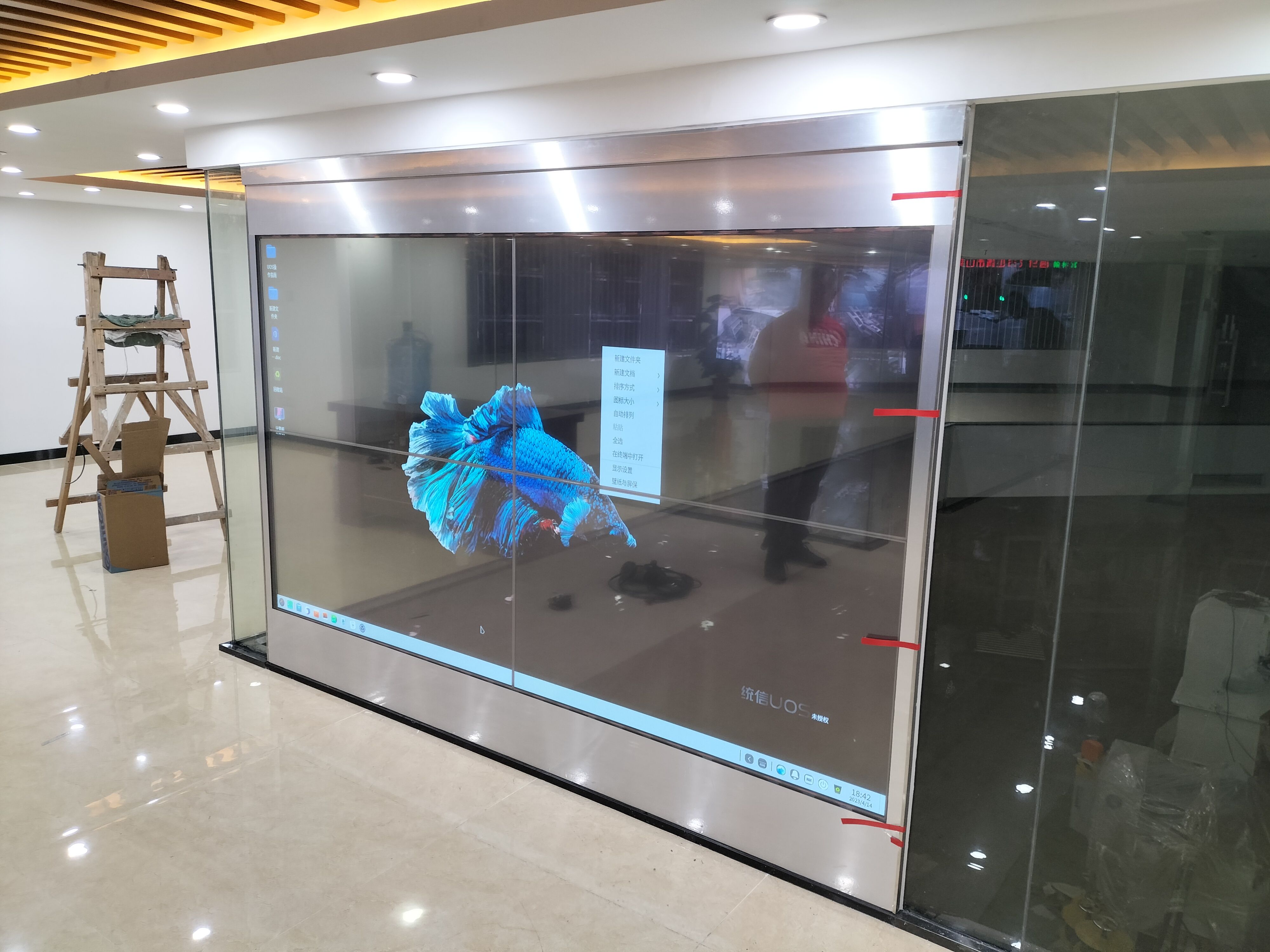
![NSS [NUSTCTF 2022 新生赛]Ezjava1](https://img-blog.csdnimg.cn/img_convert/b2e6f2a3111d26a1d8e79ddf19b90b2b.png)





